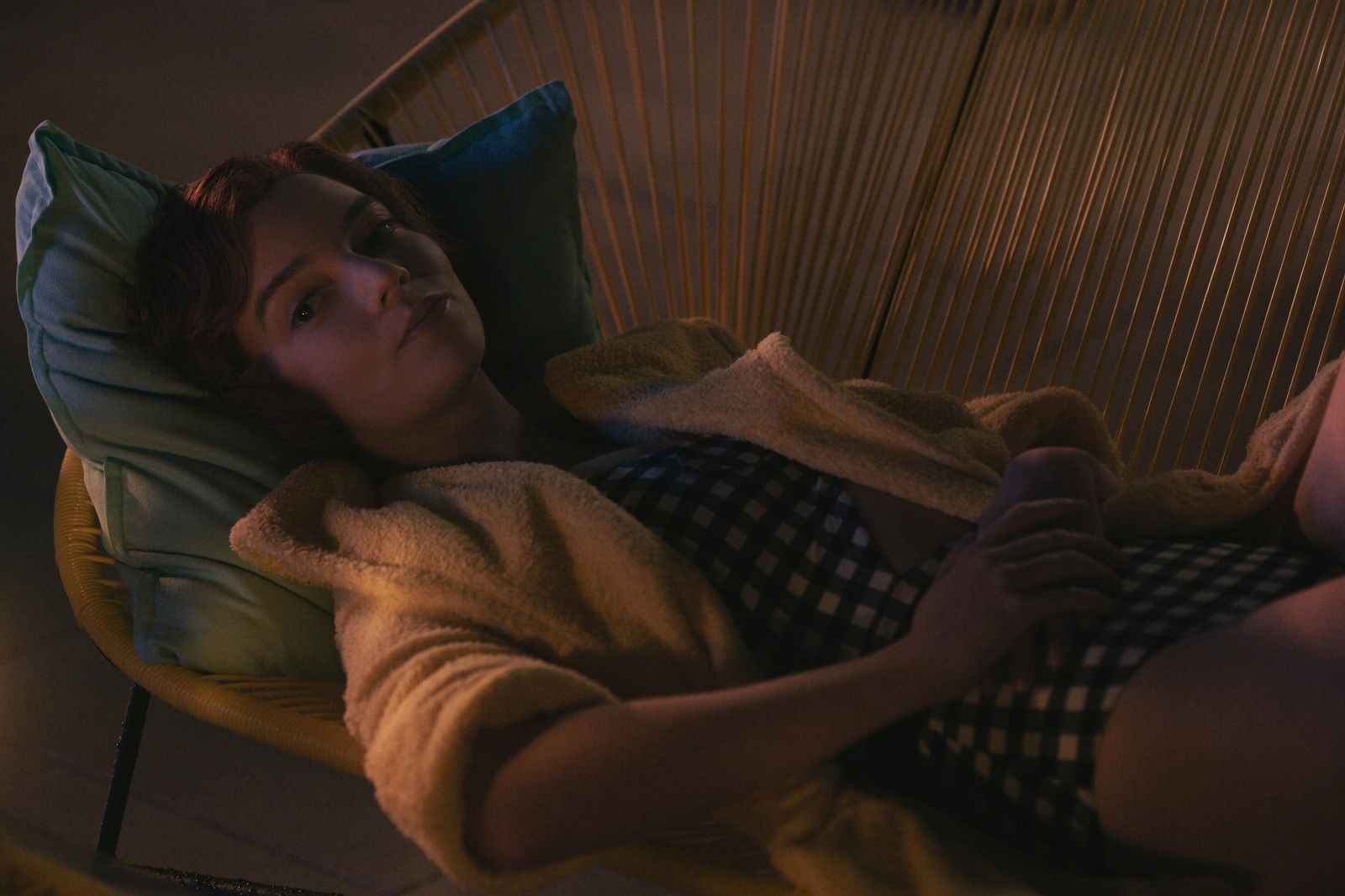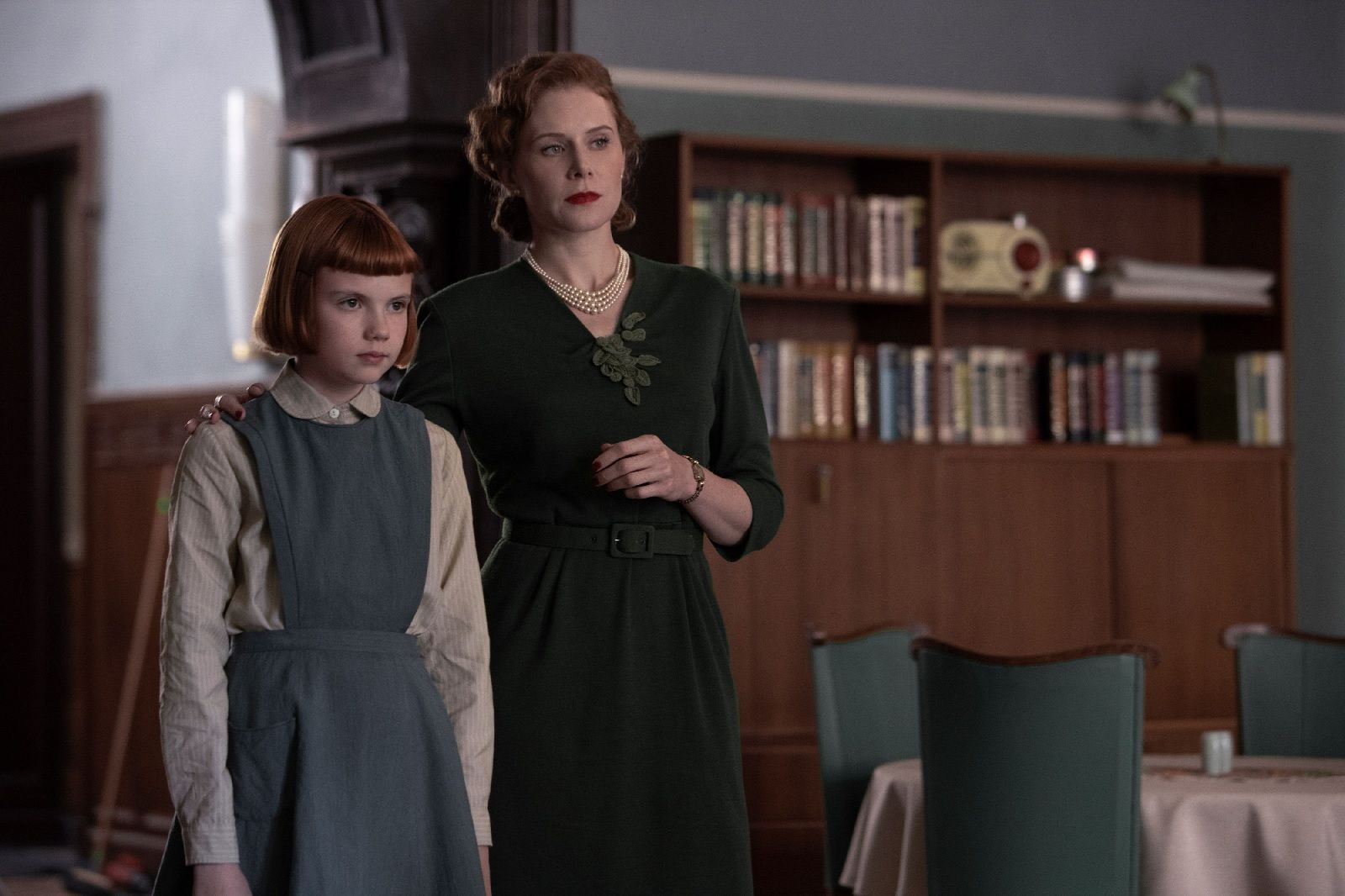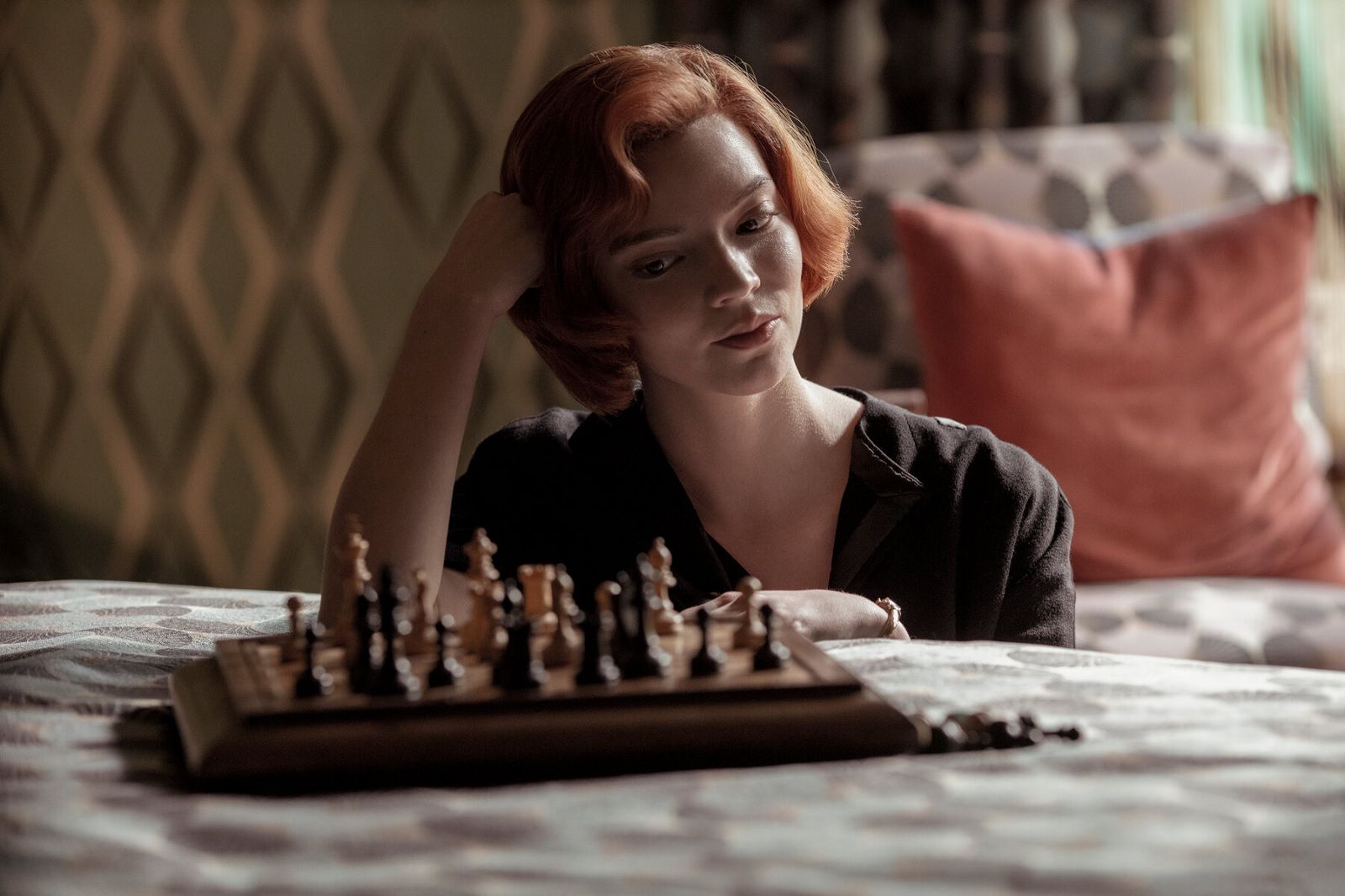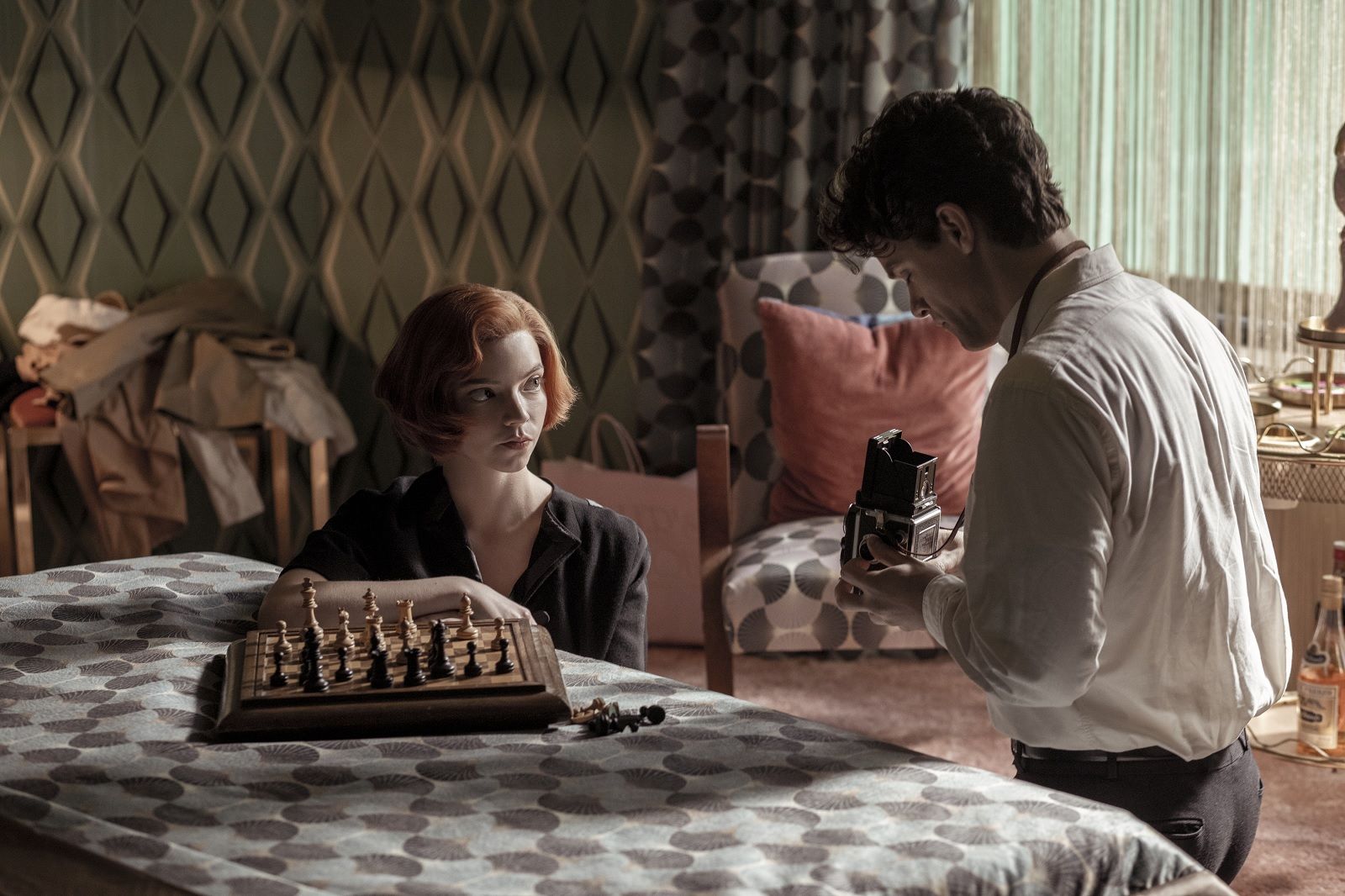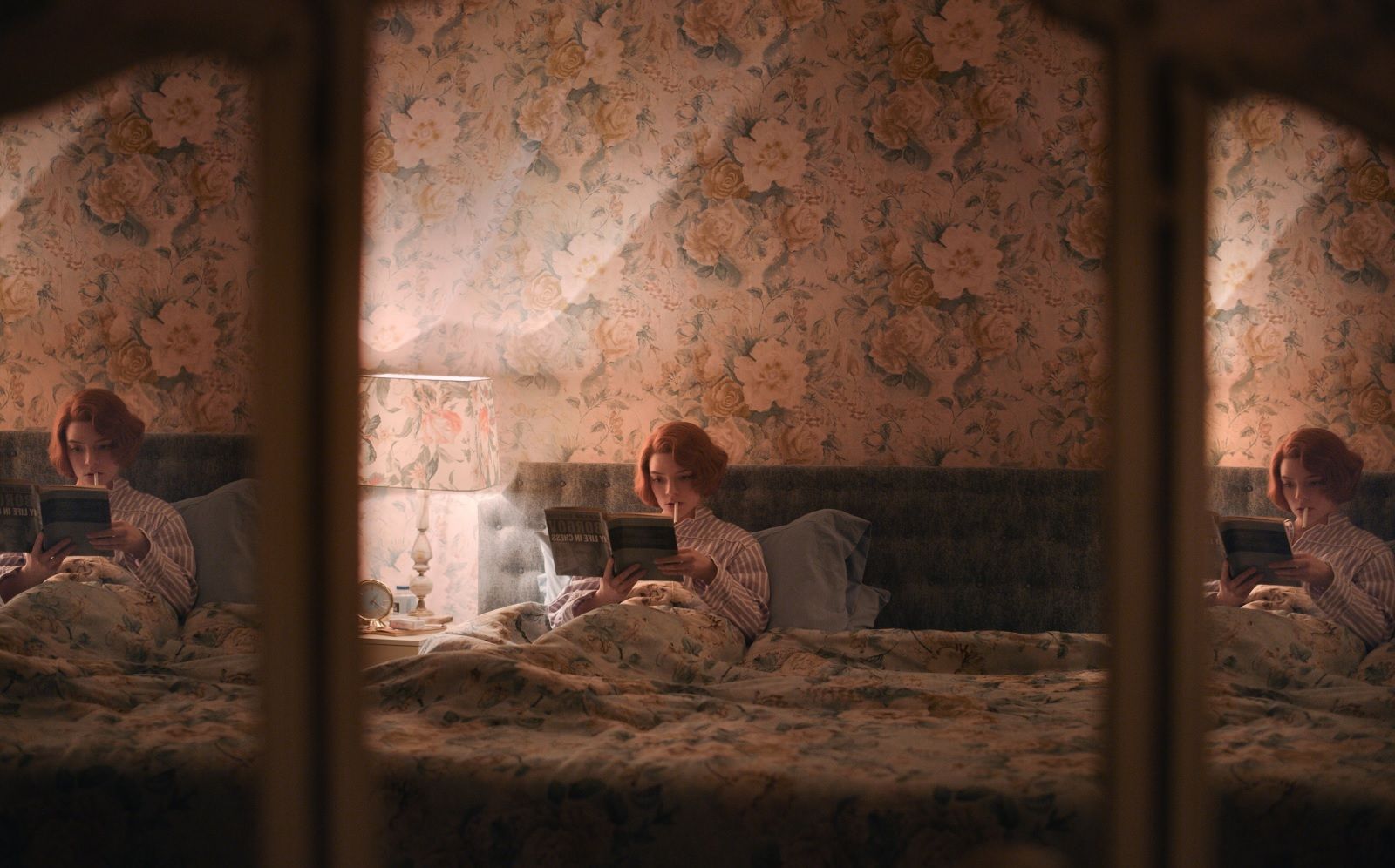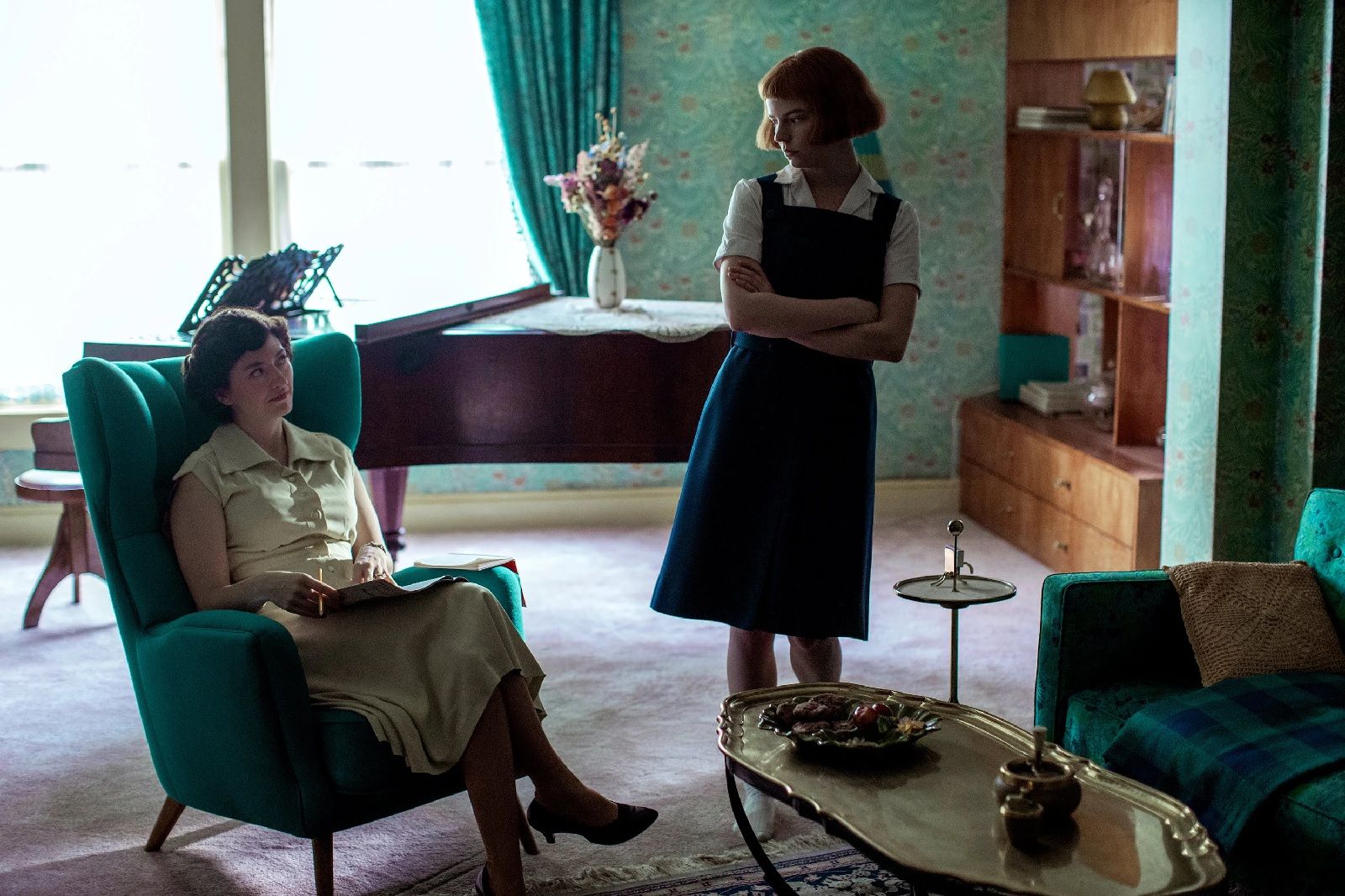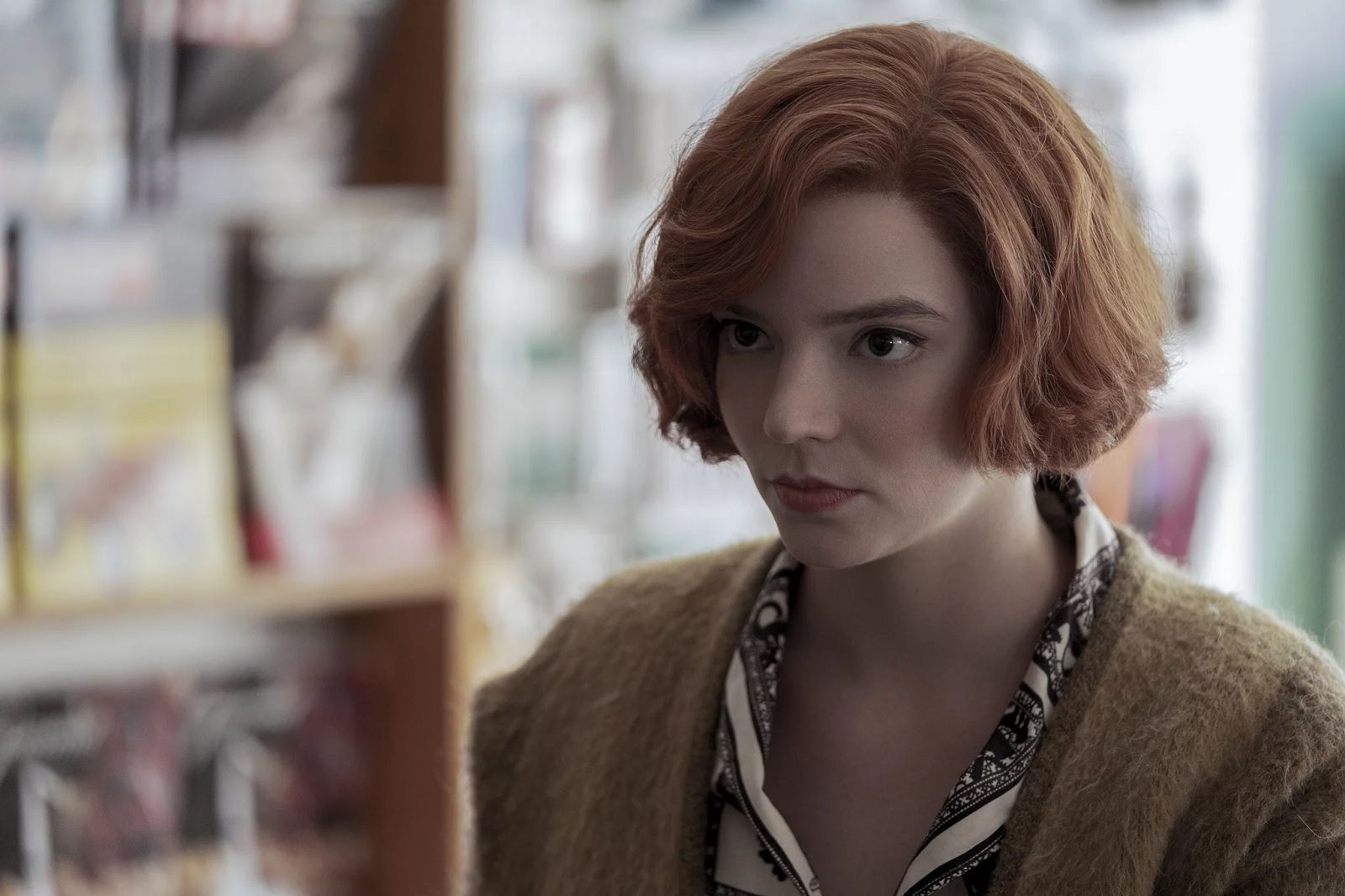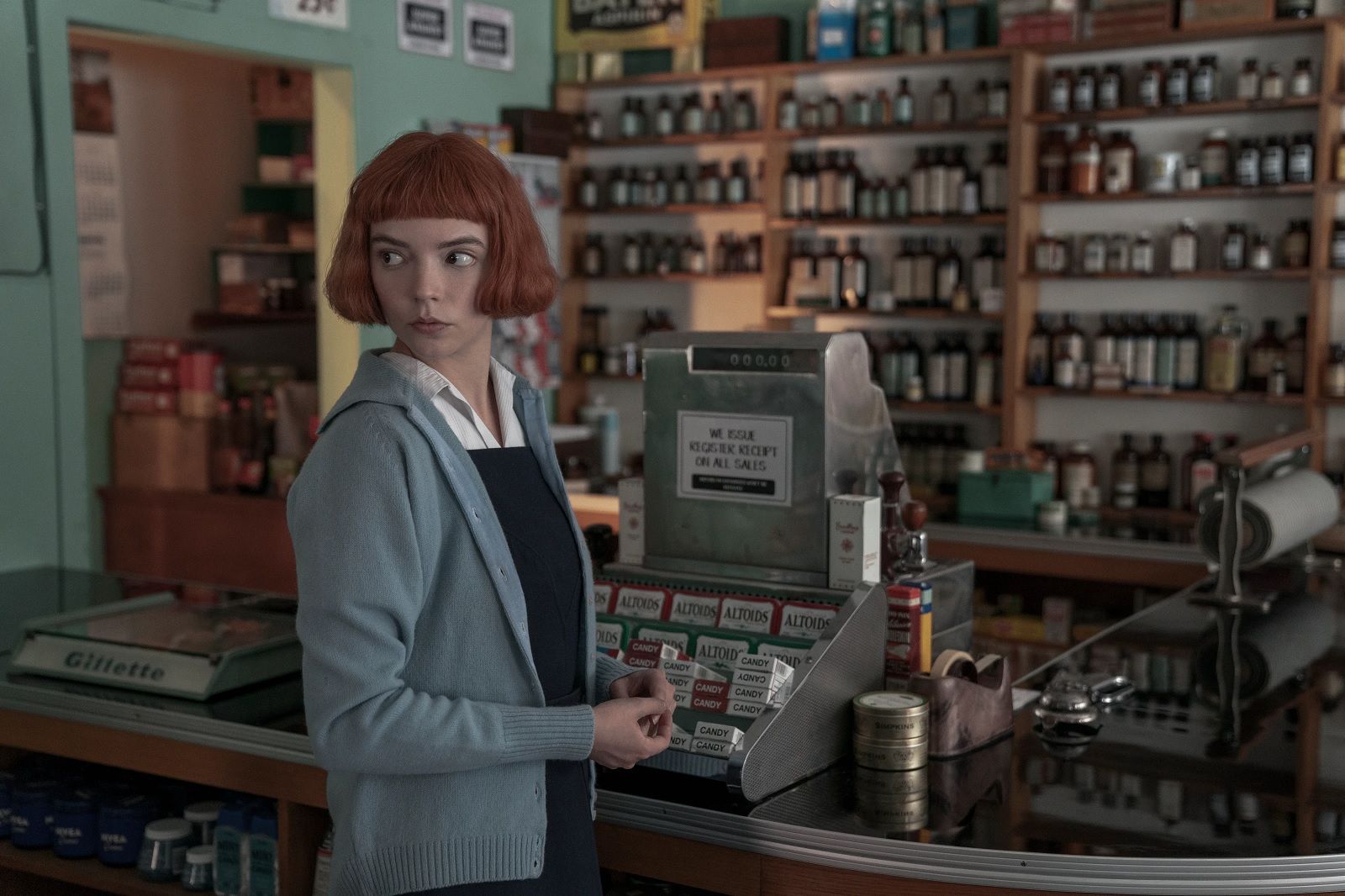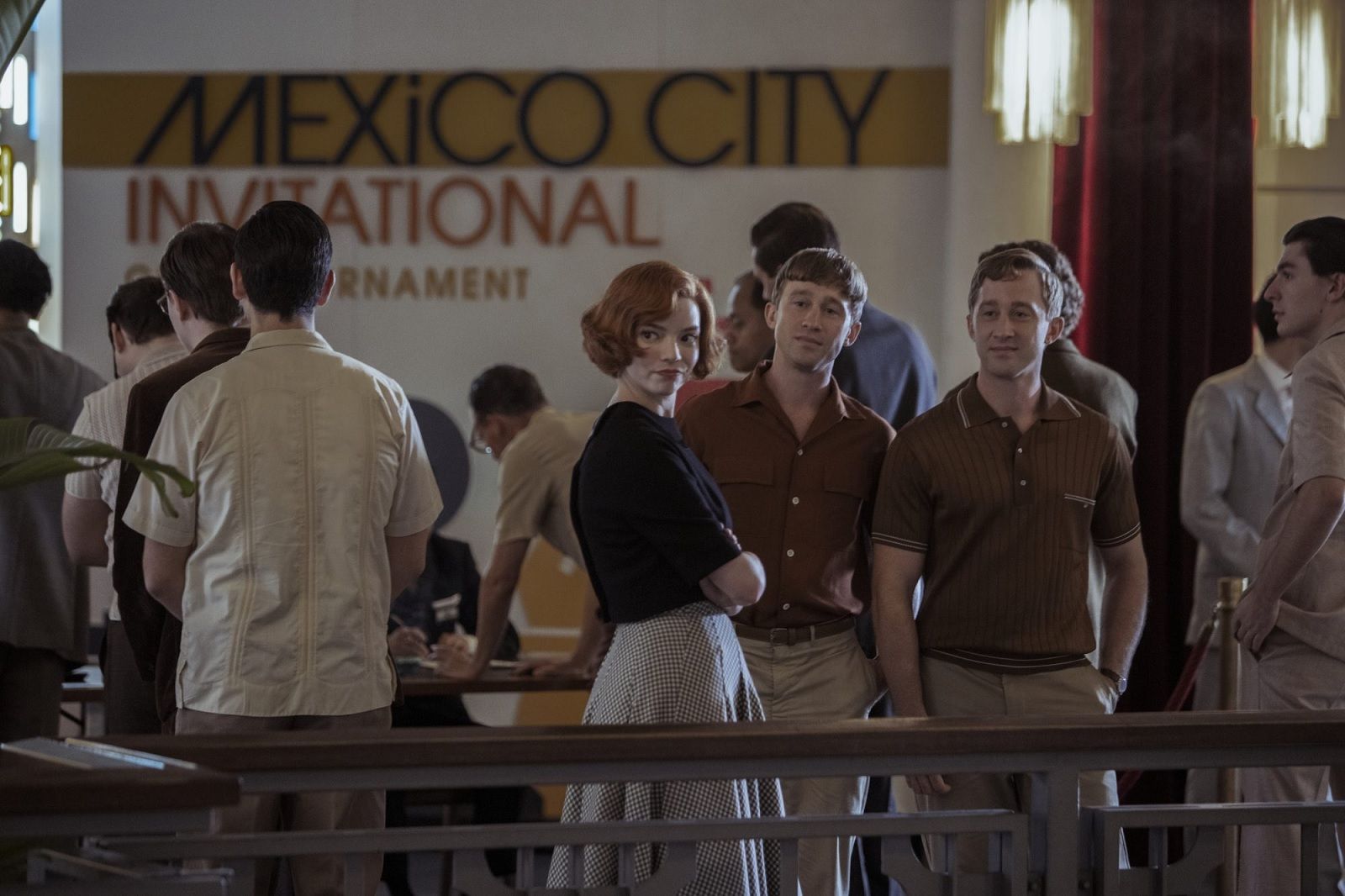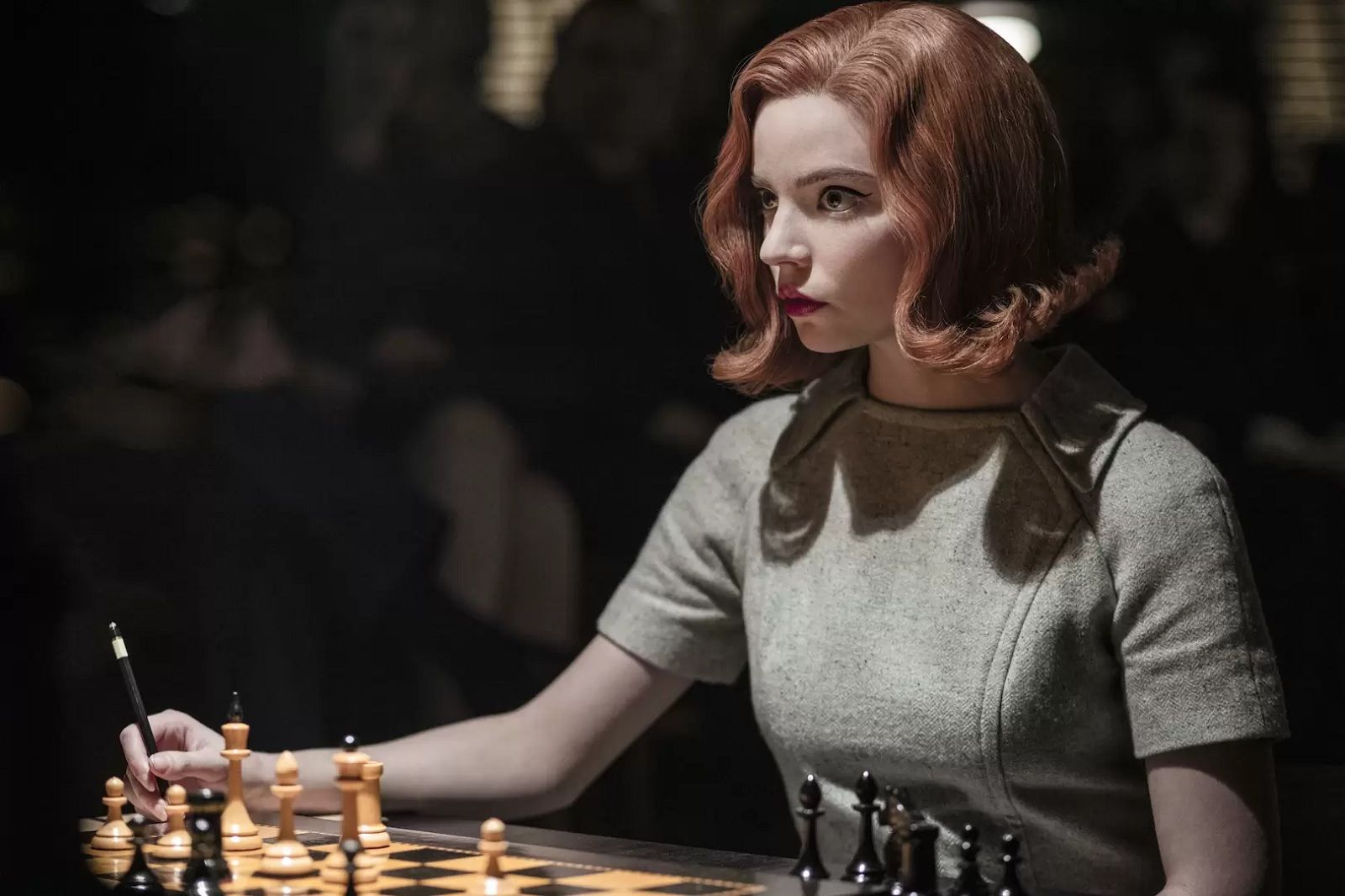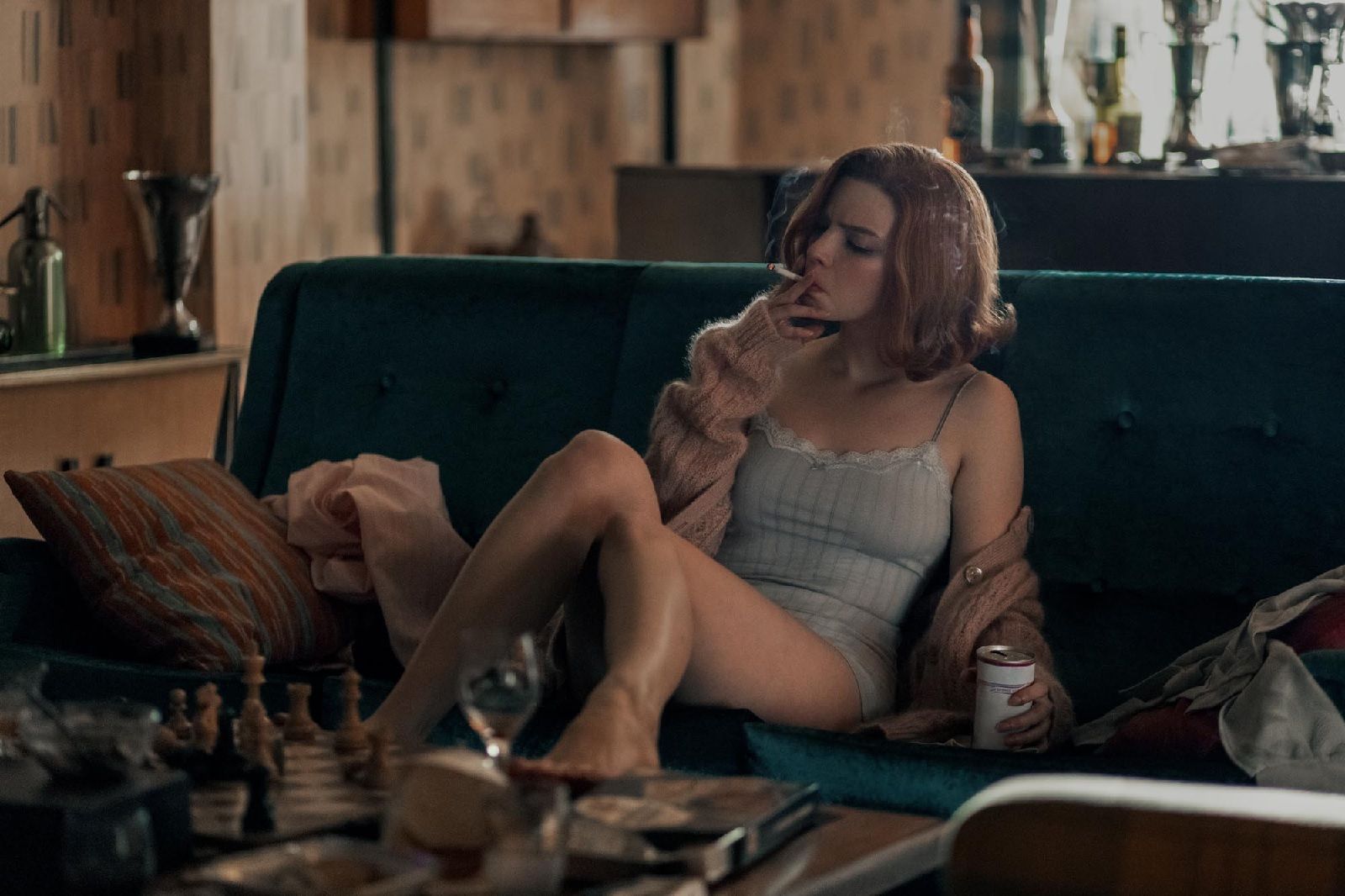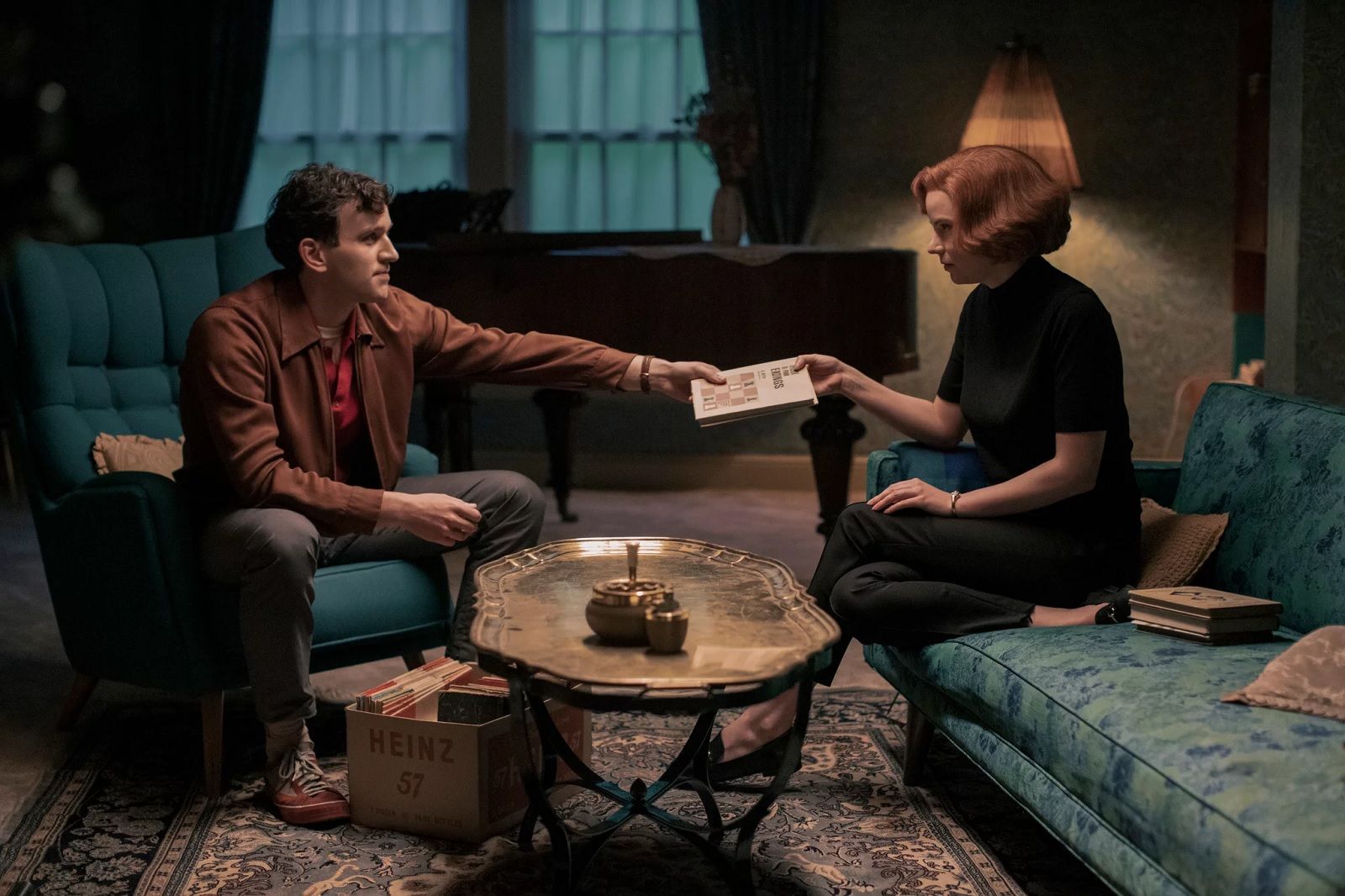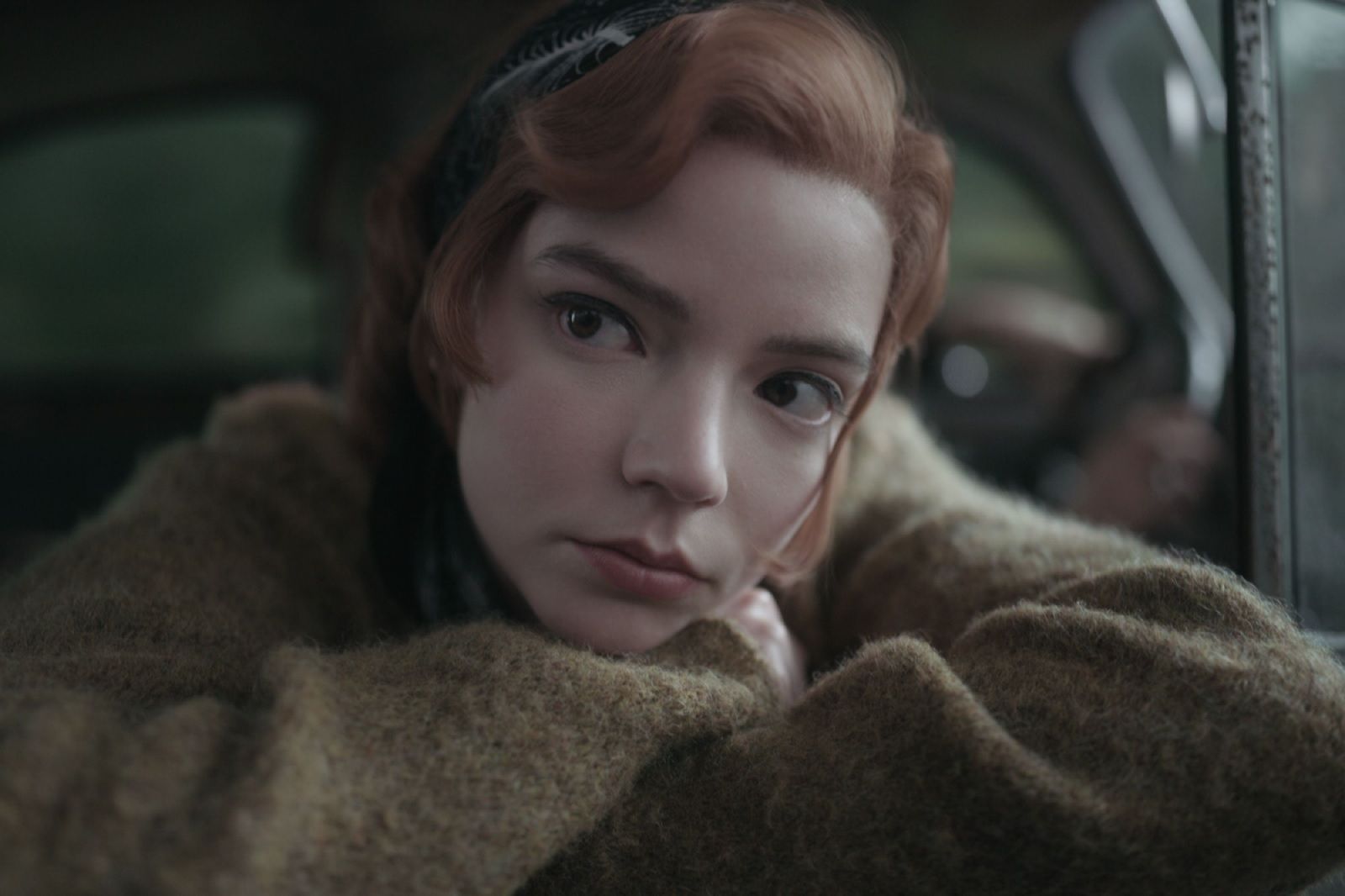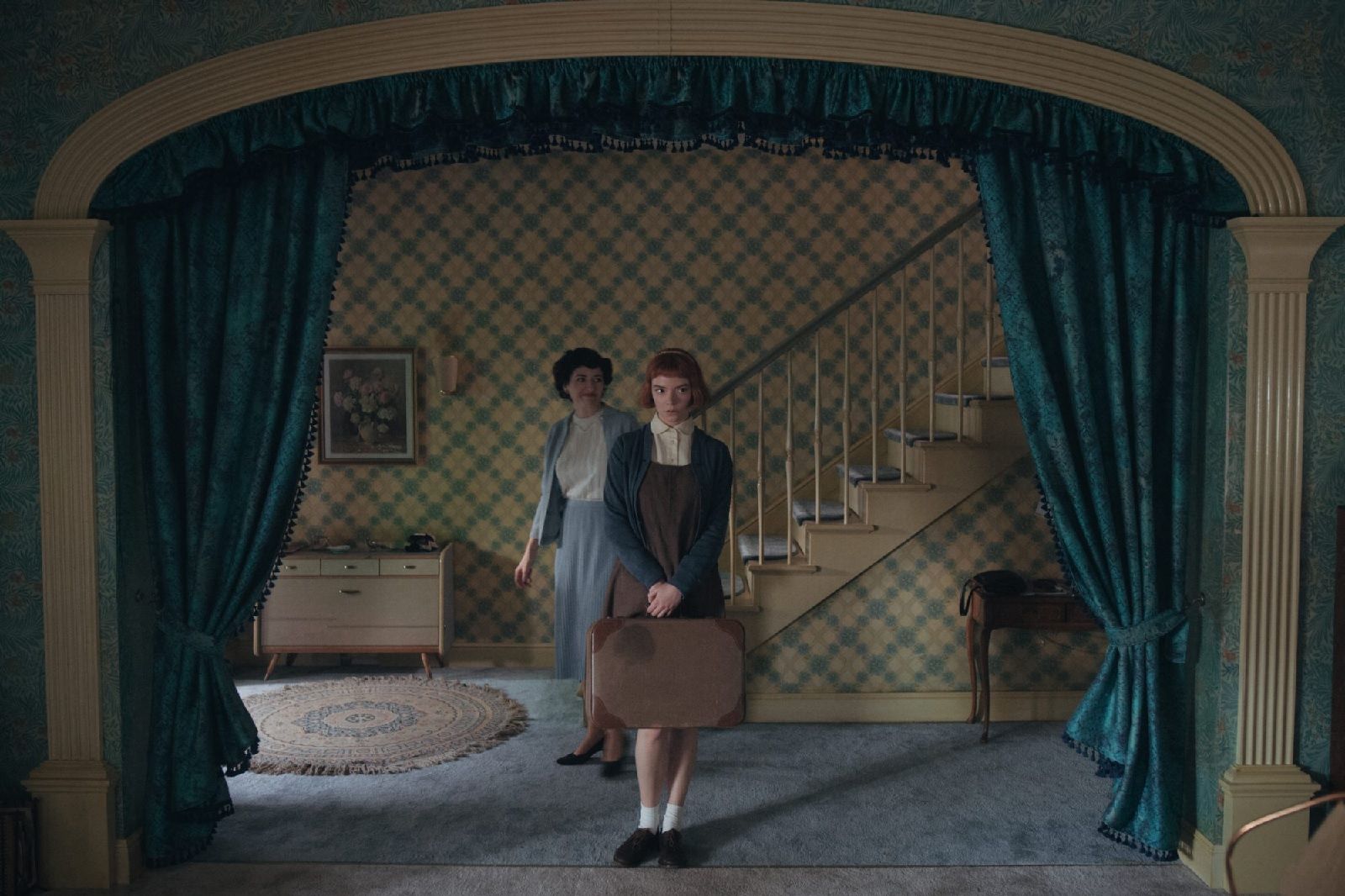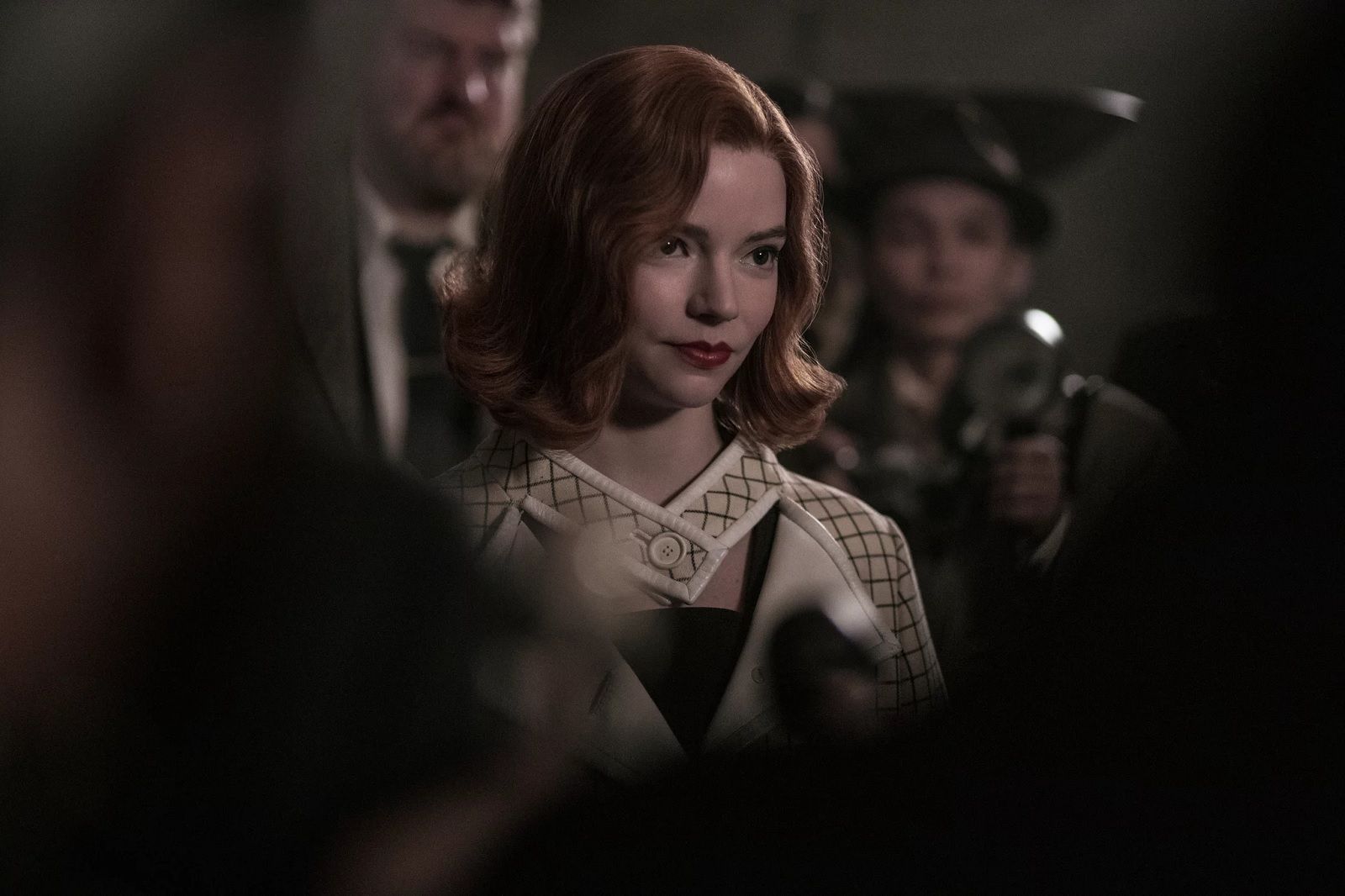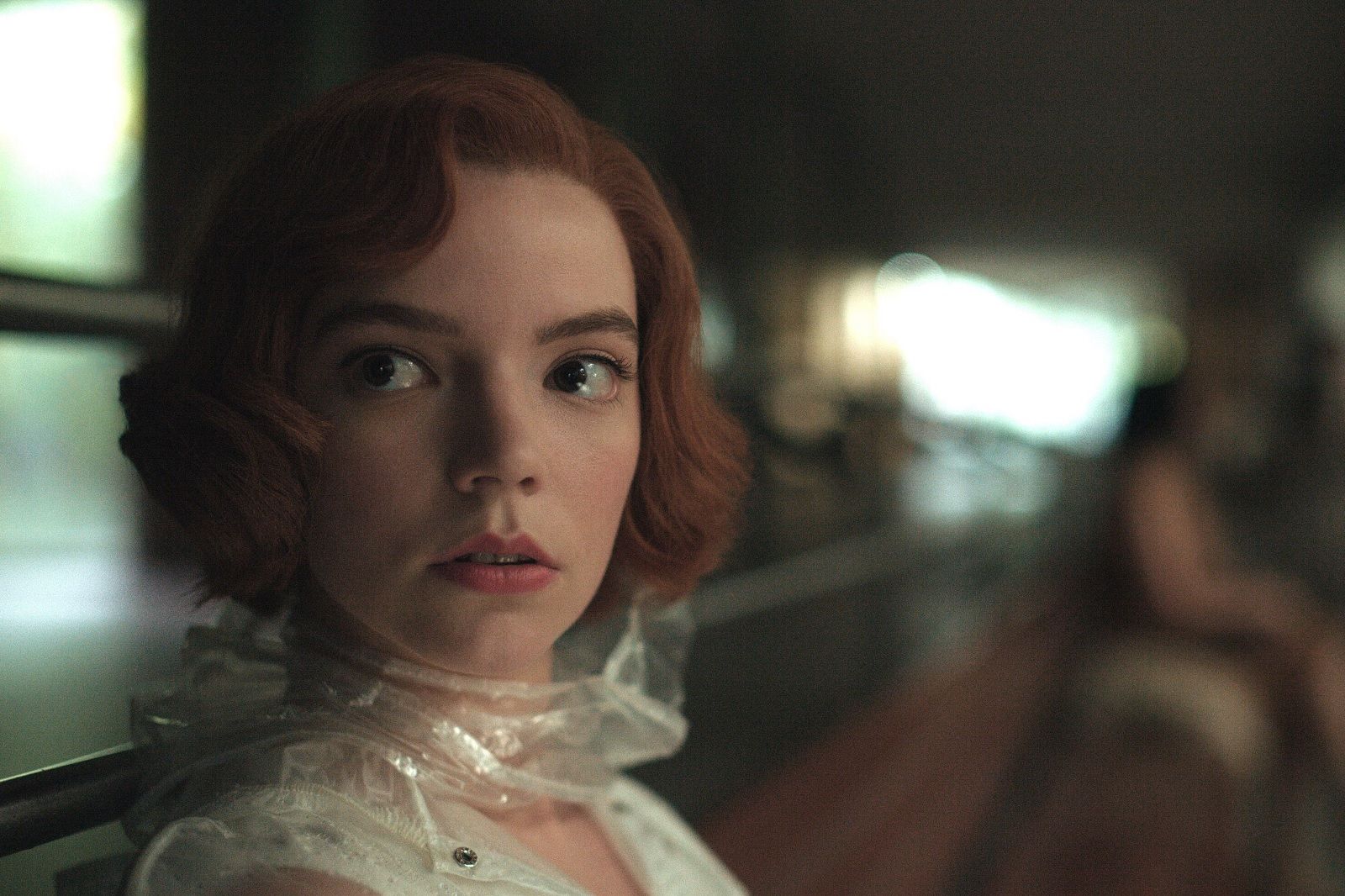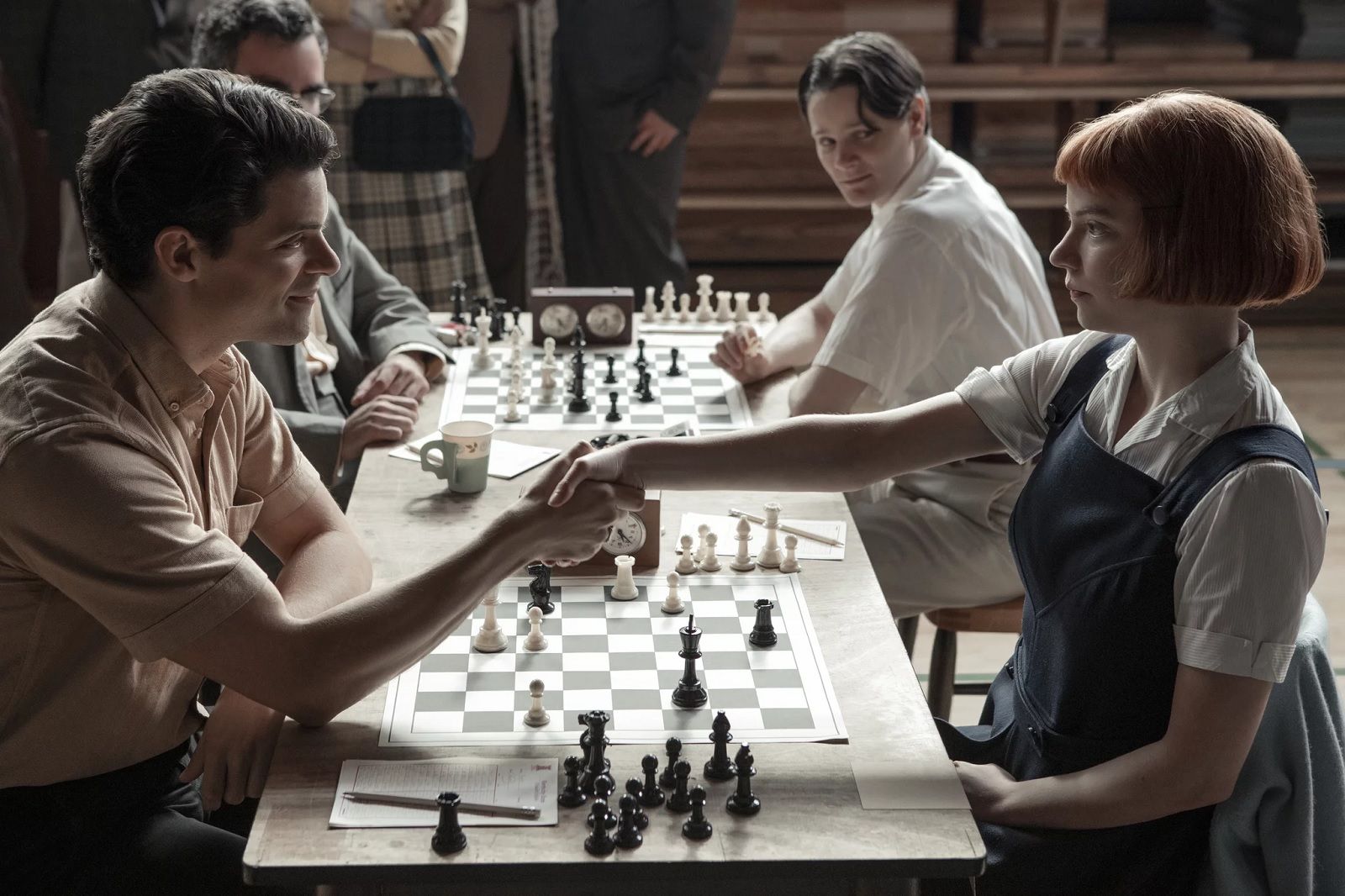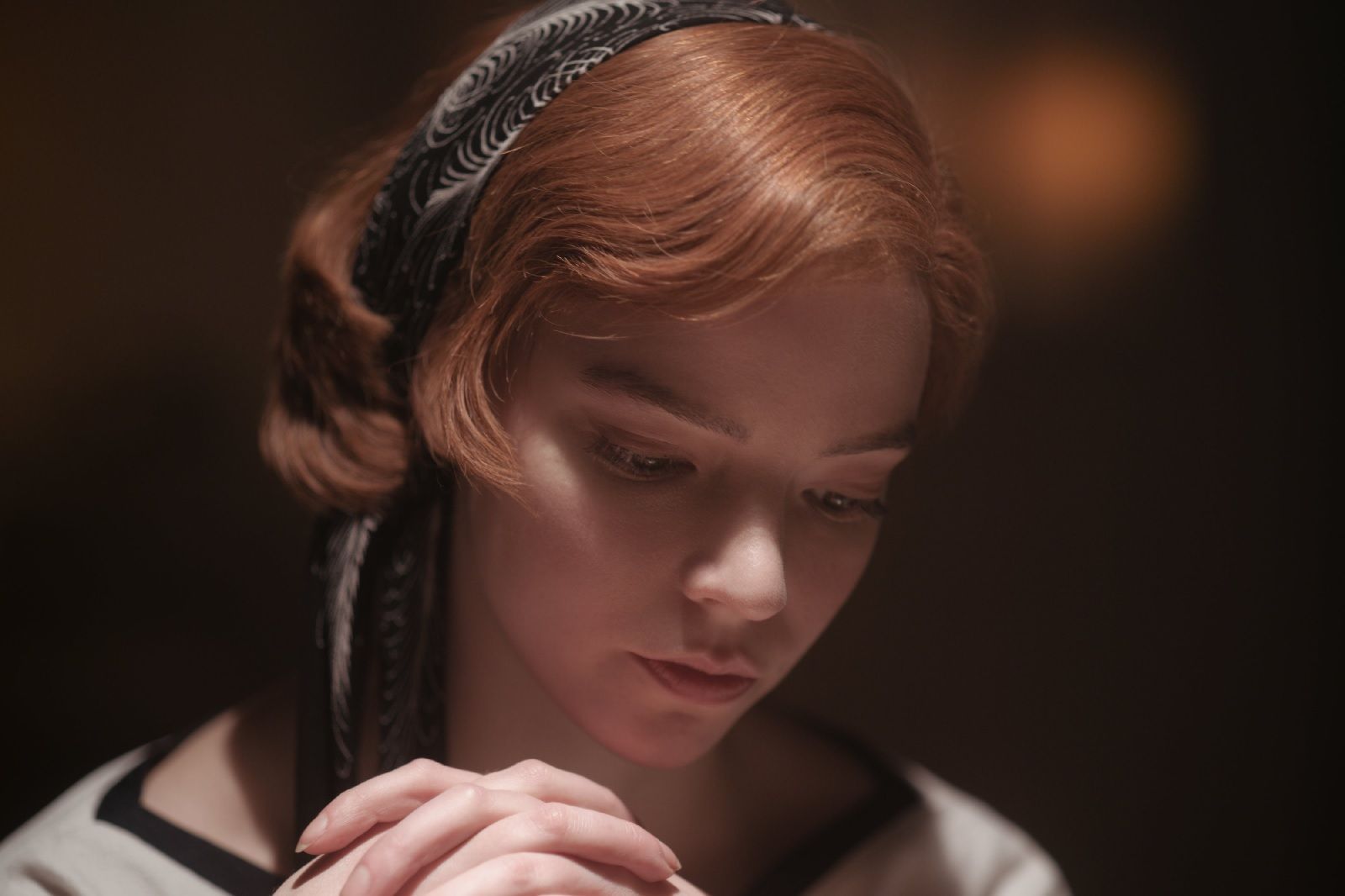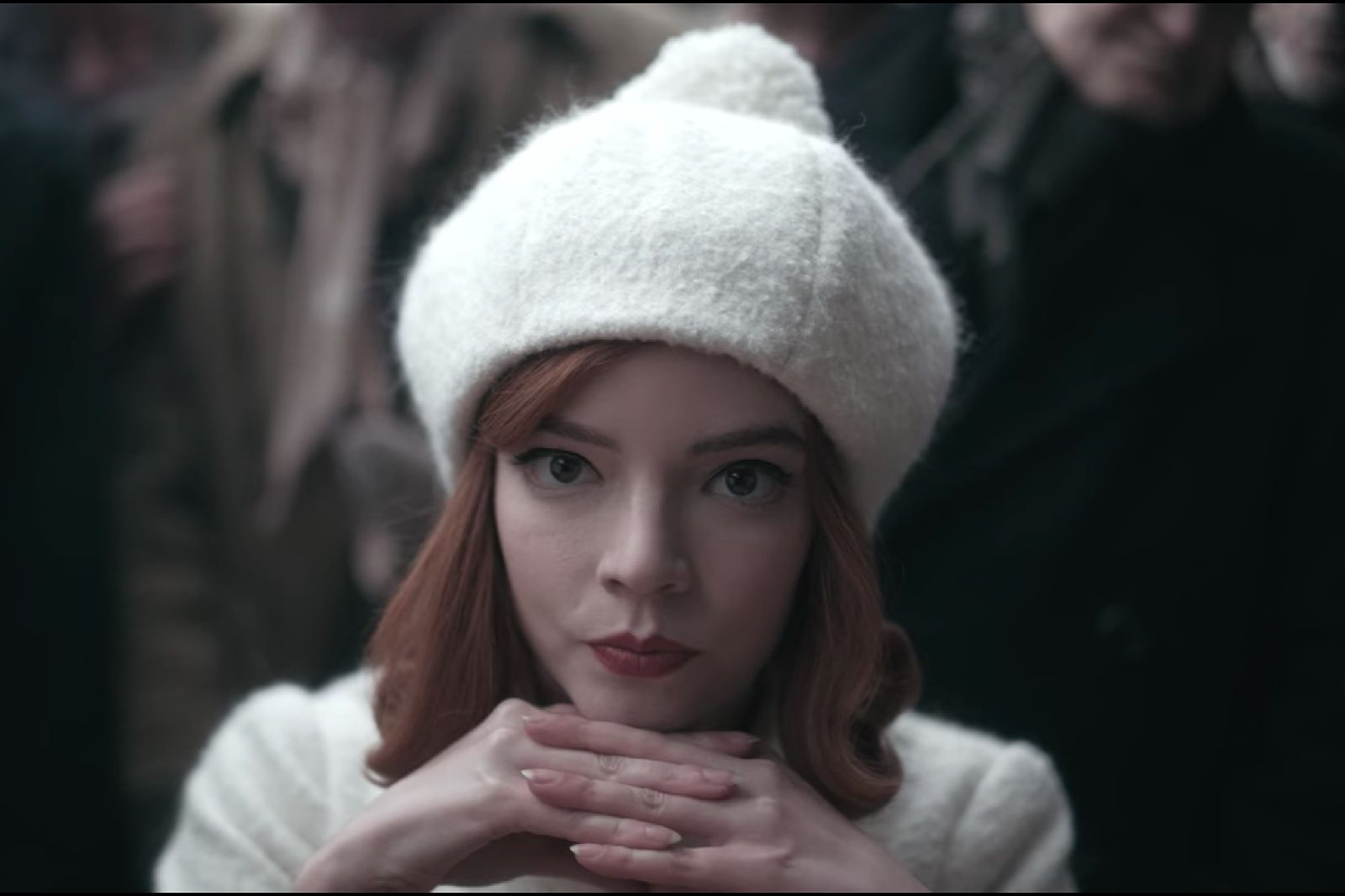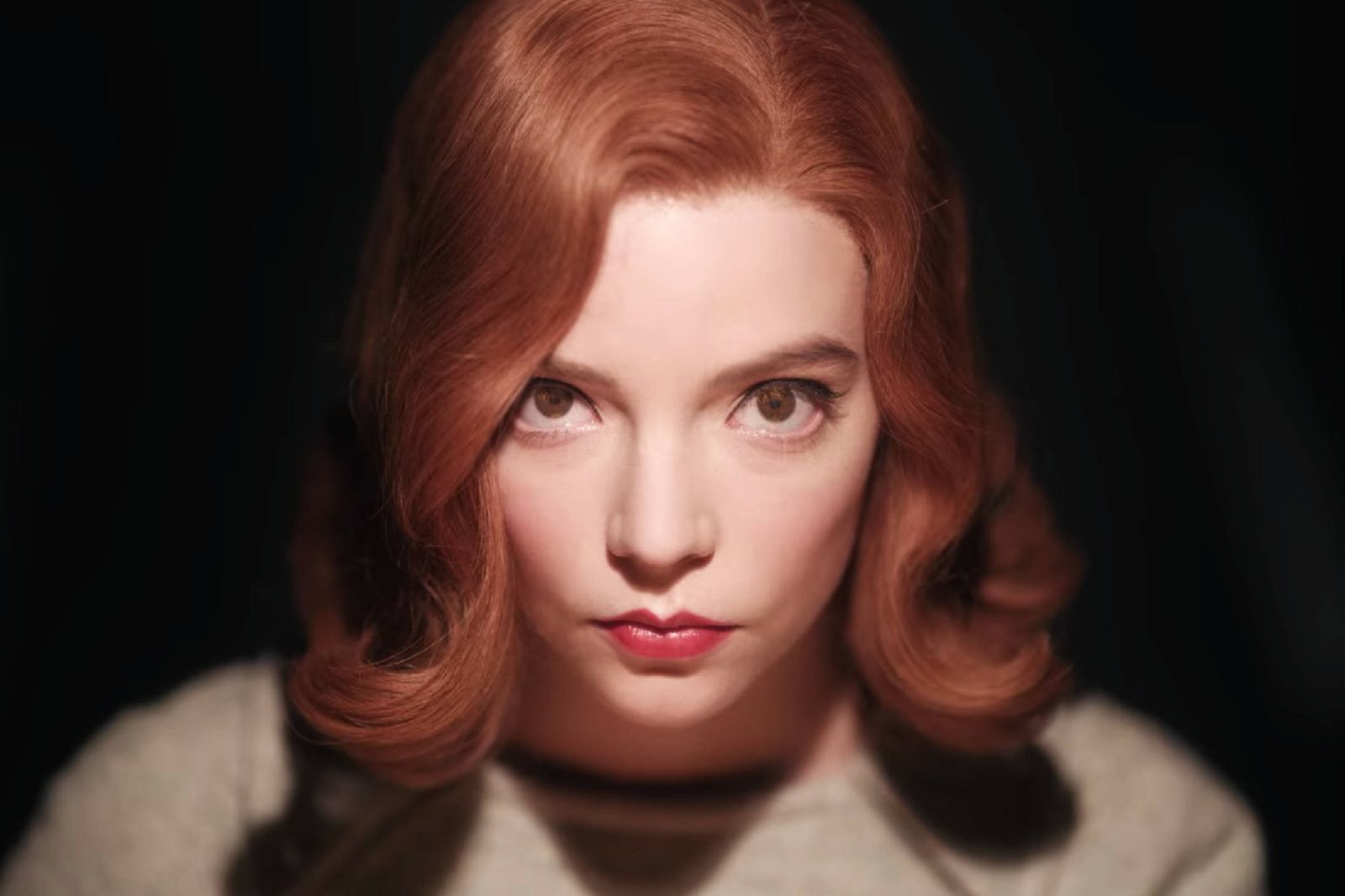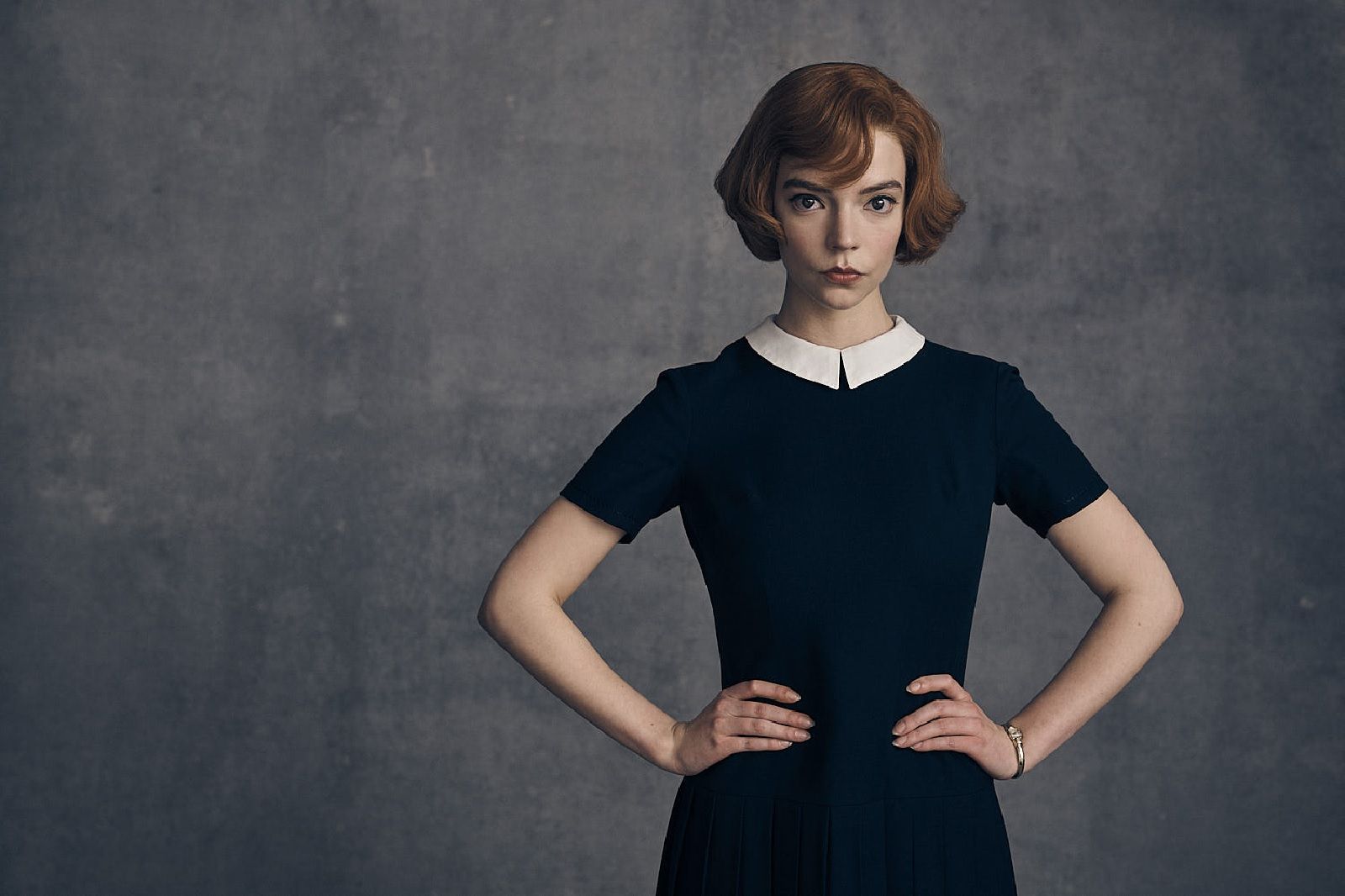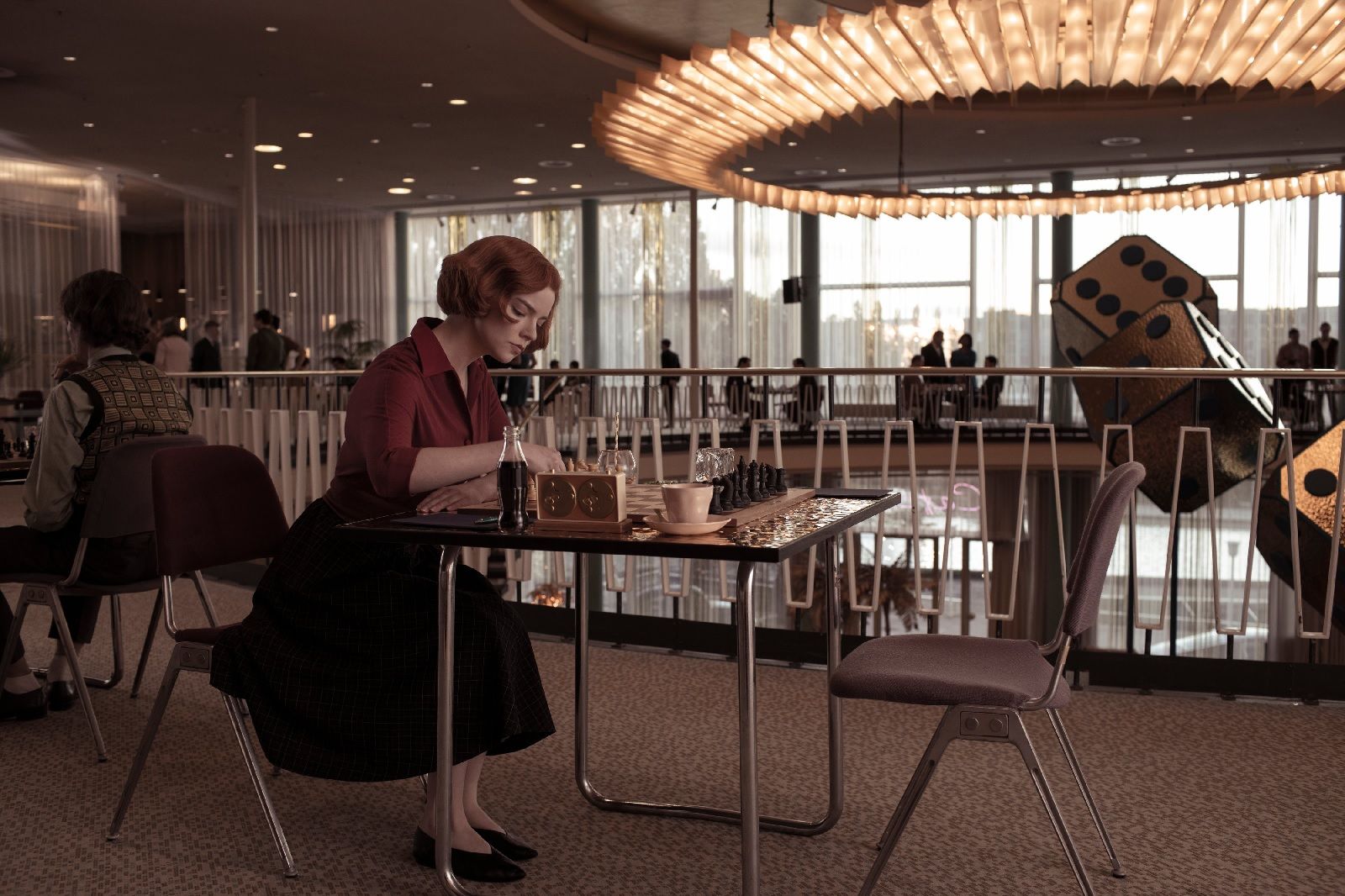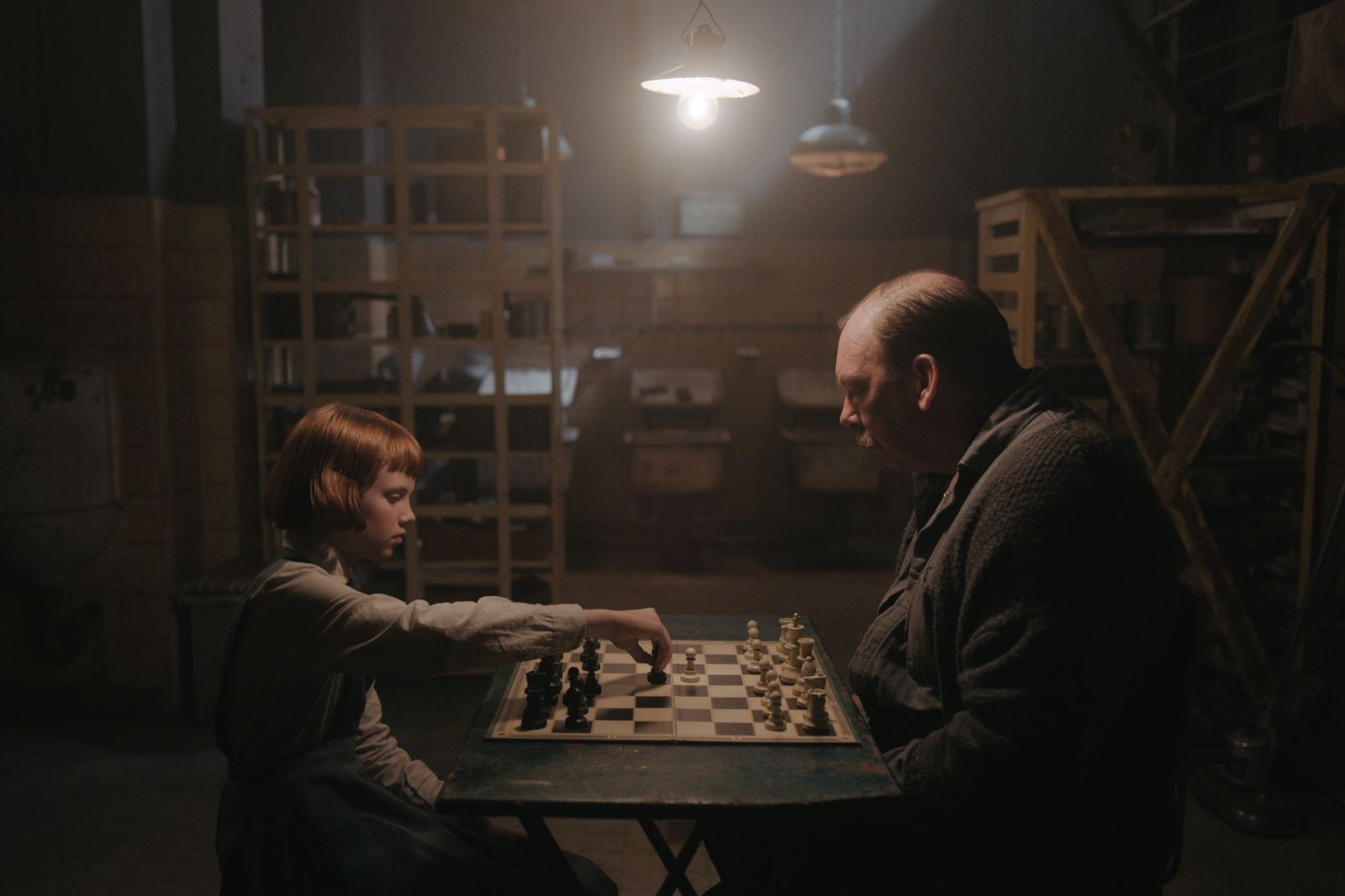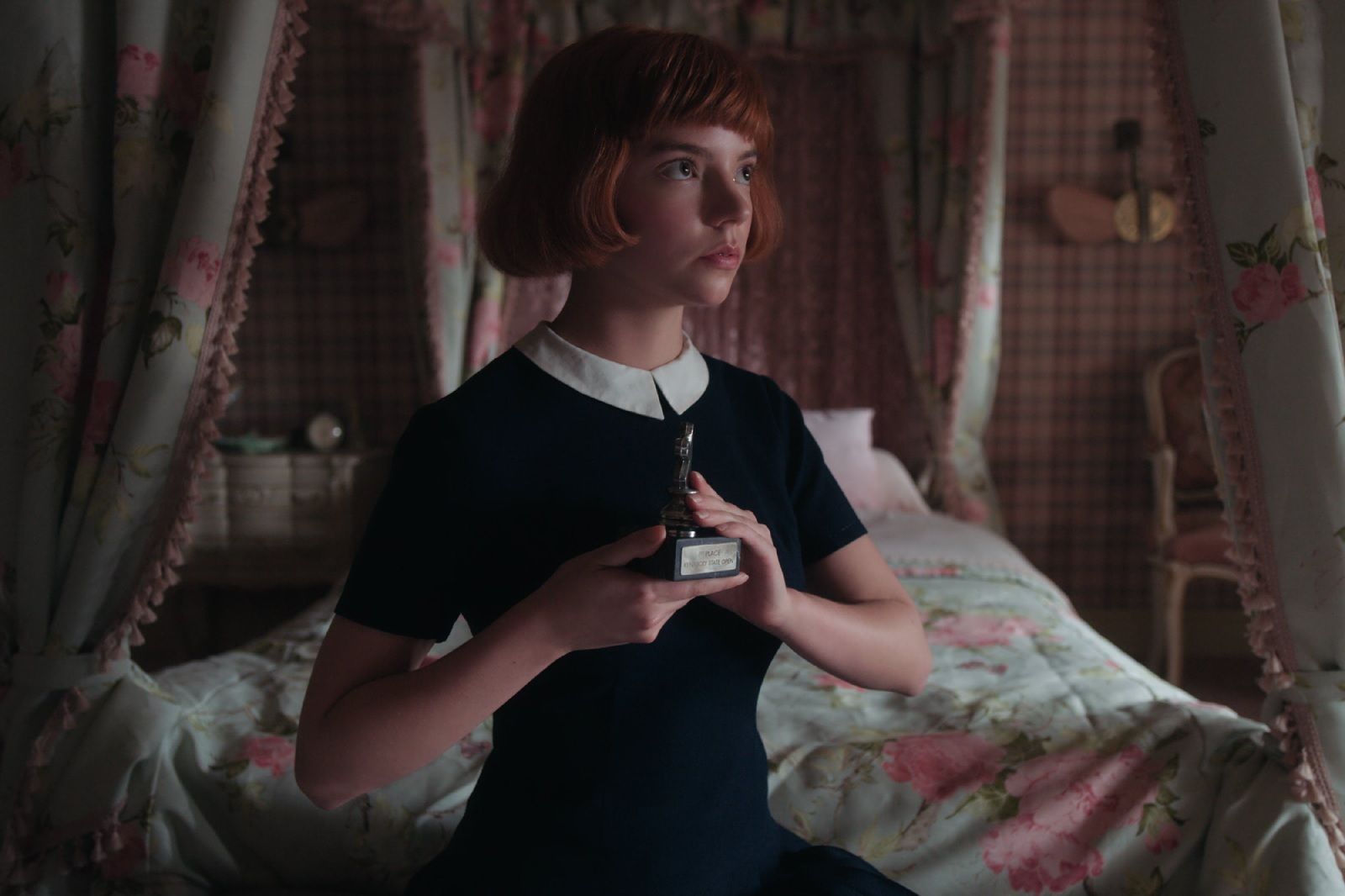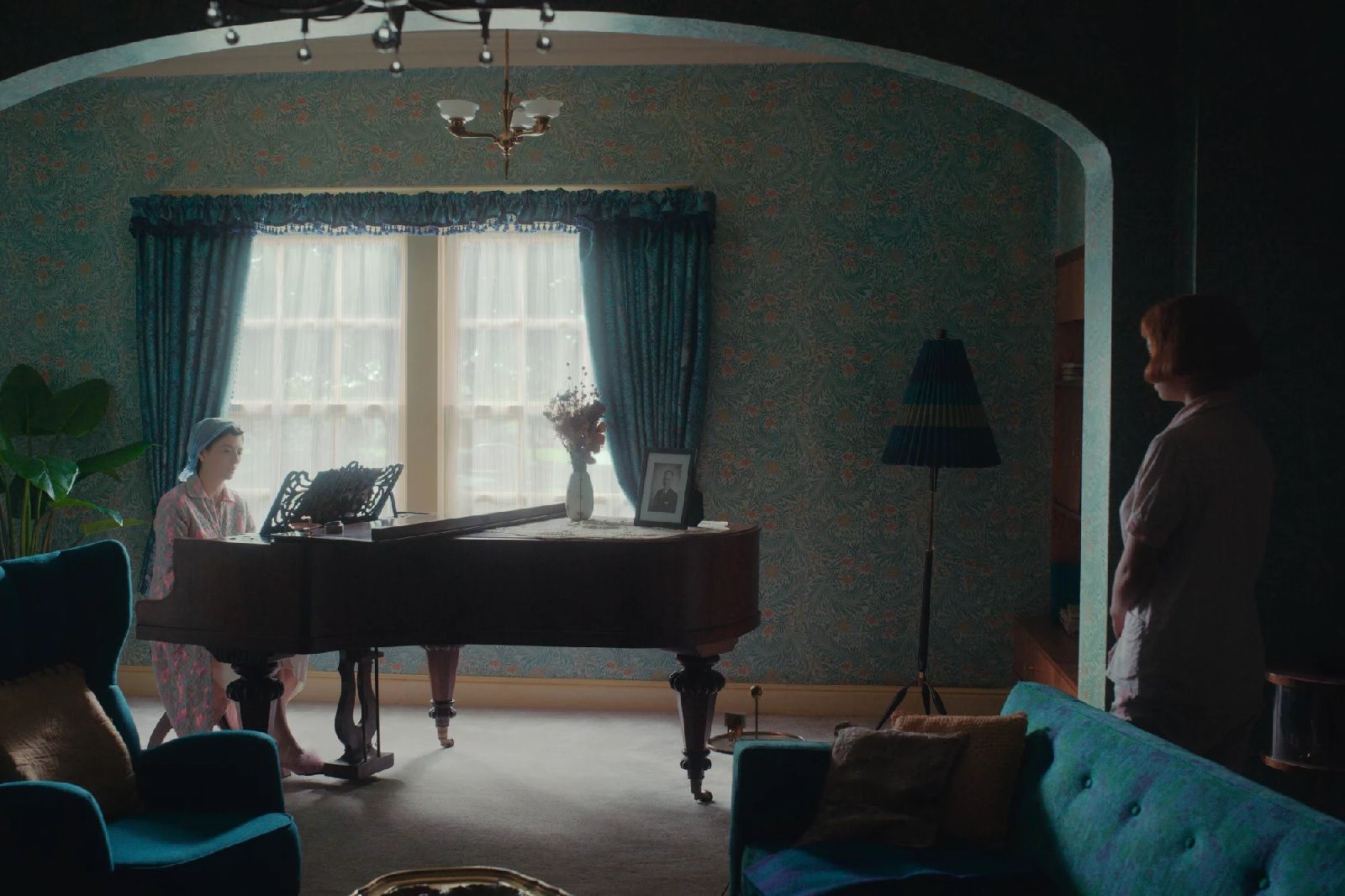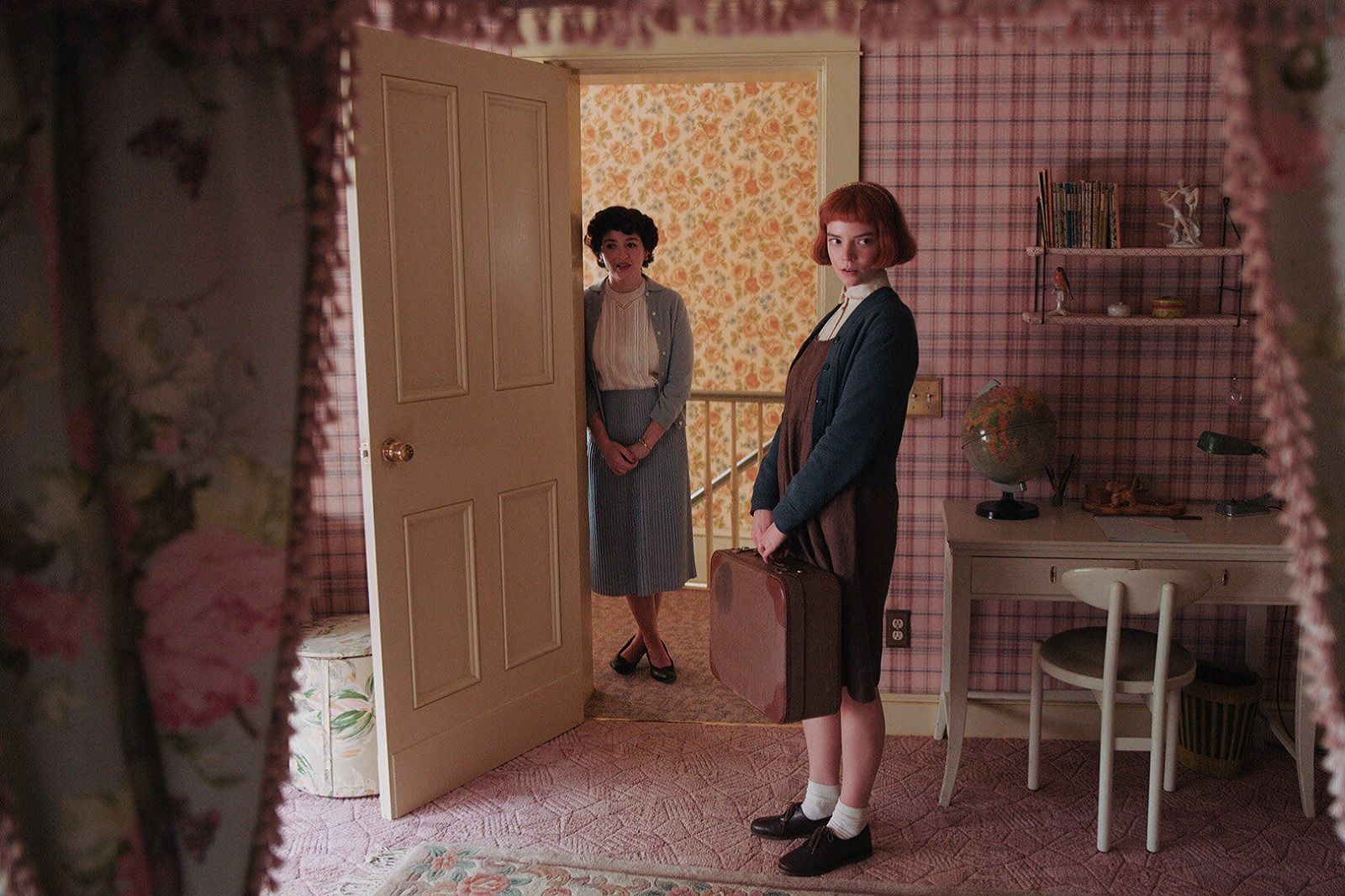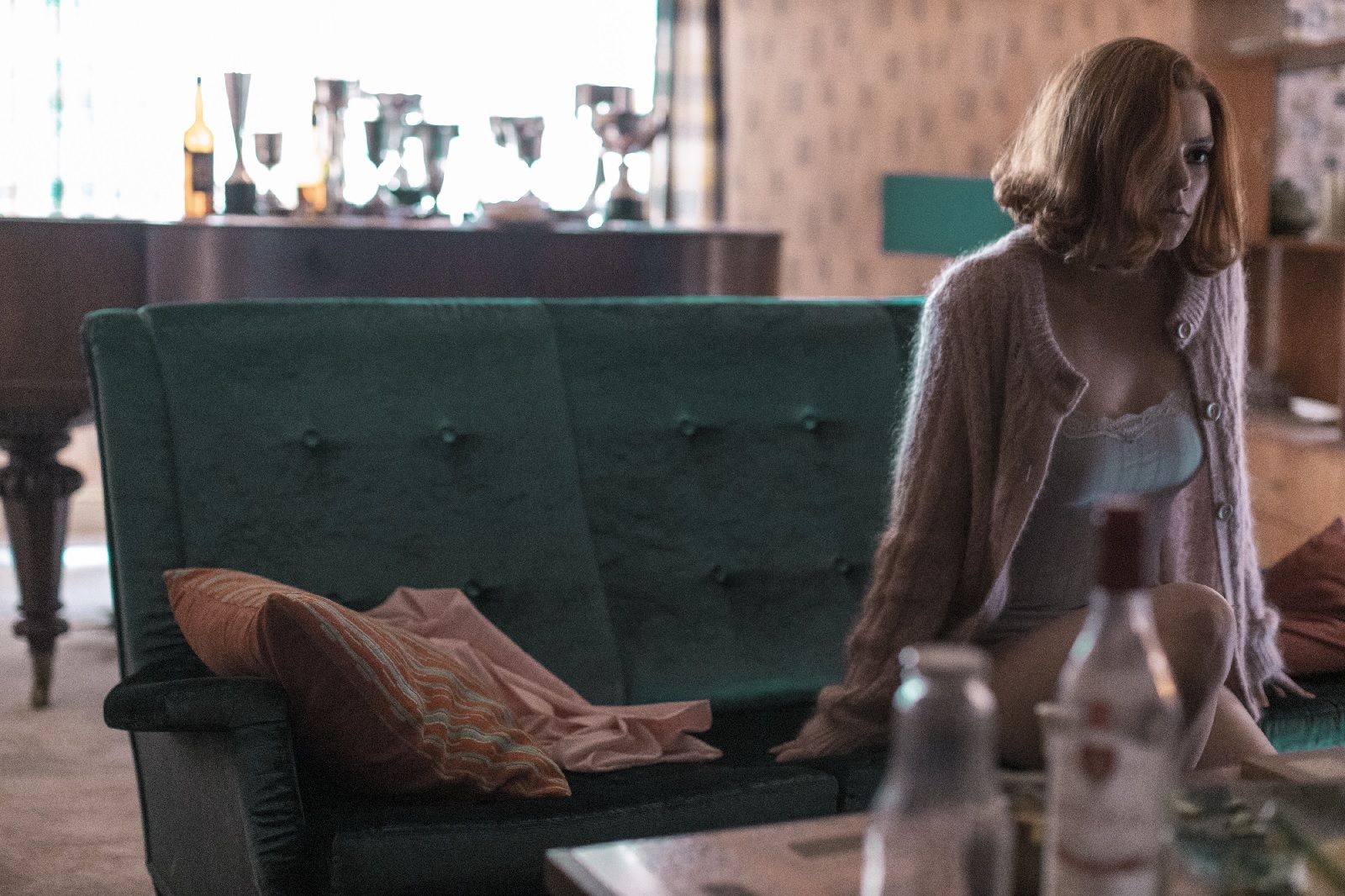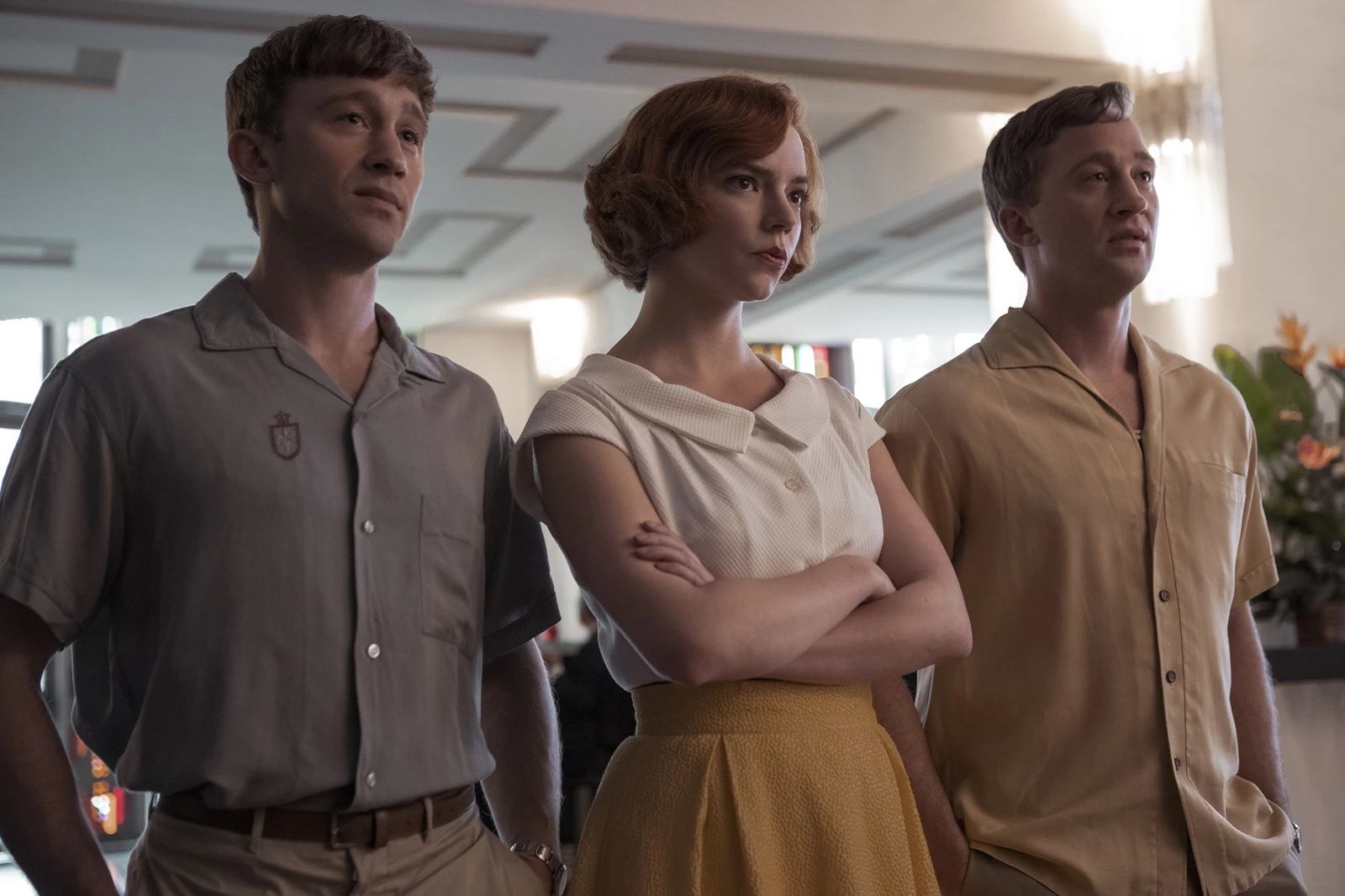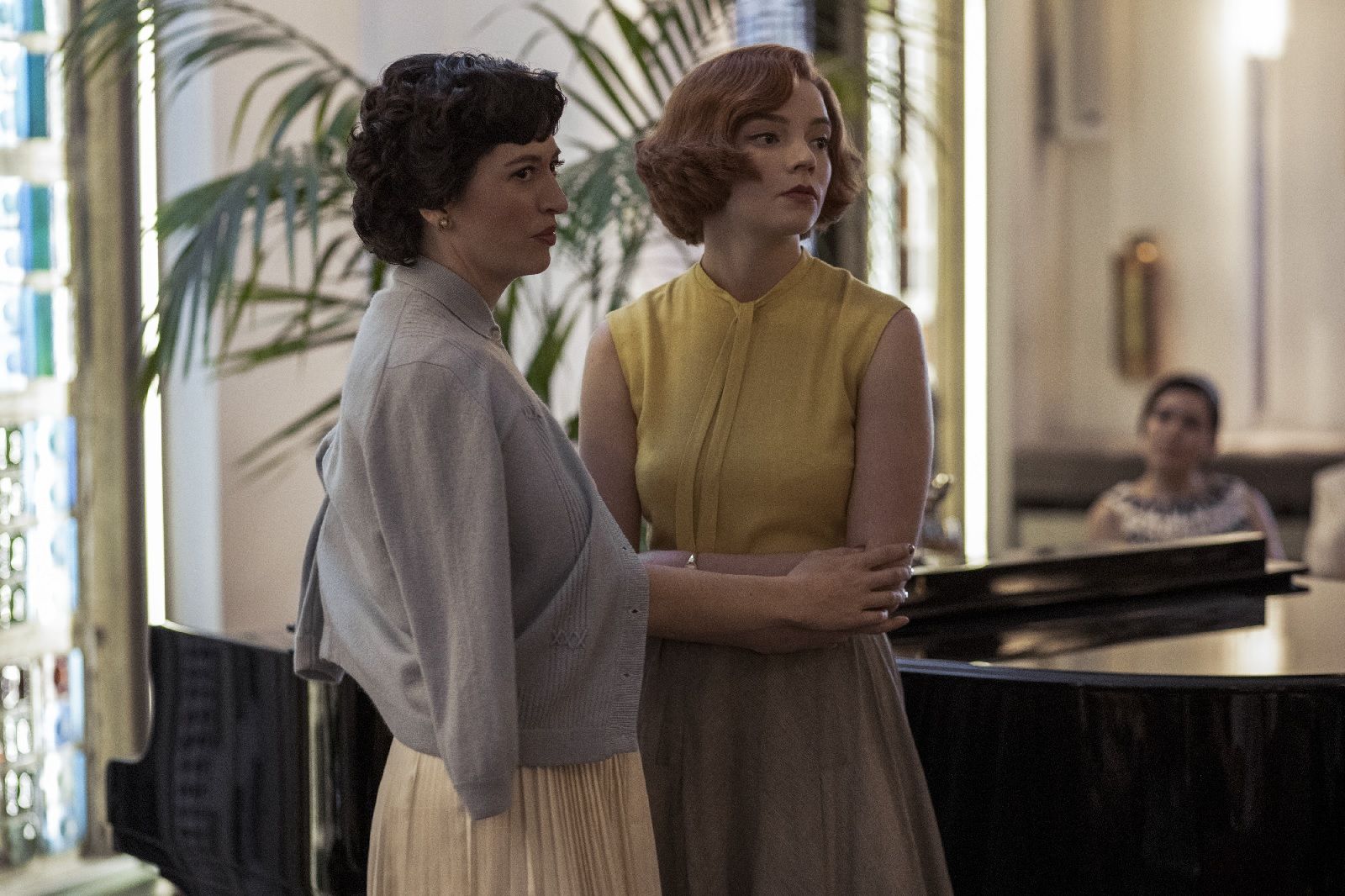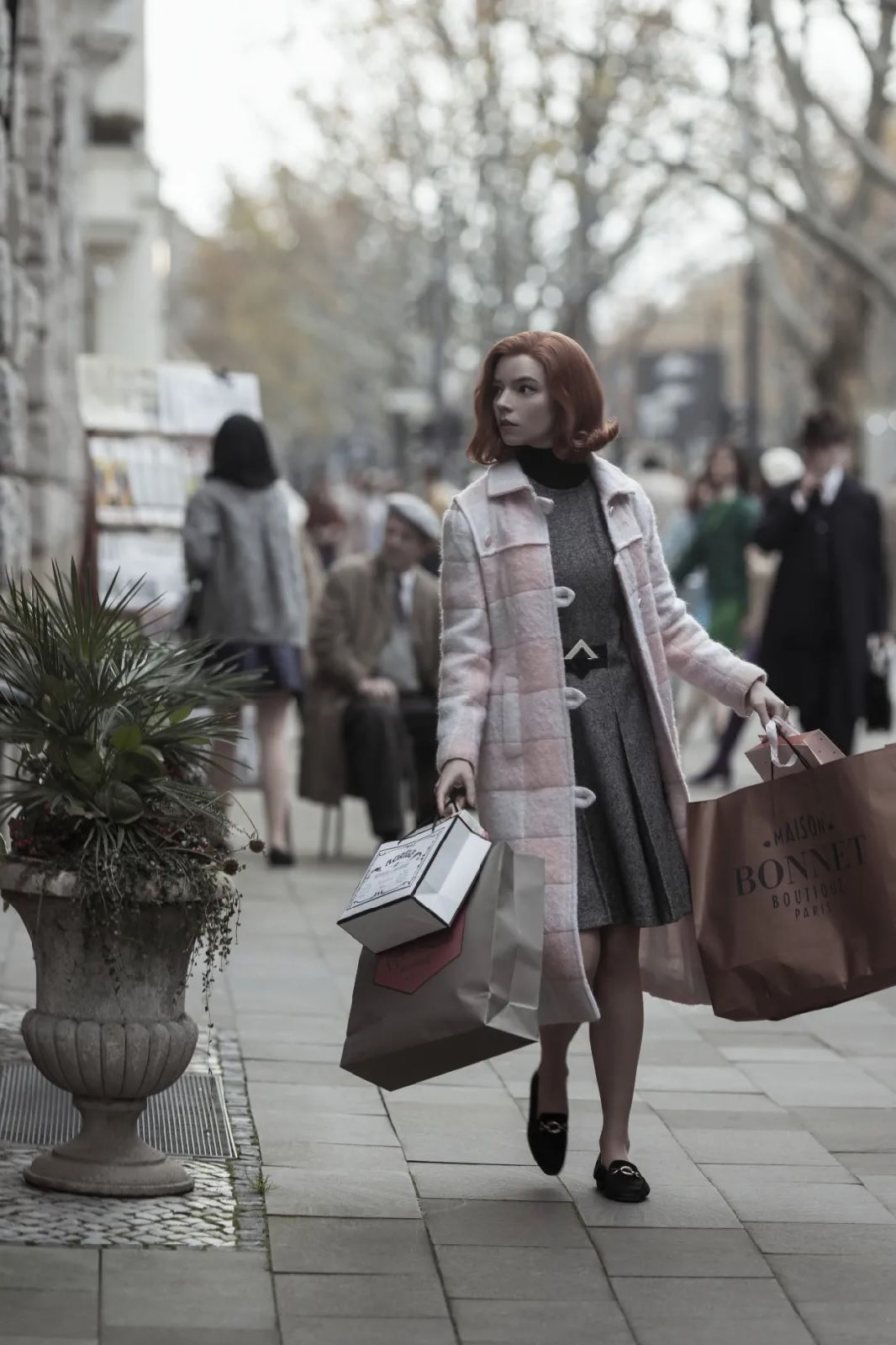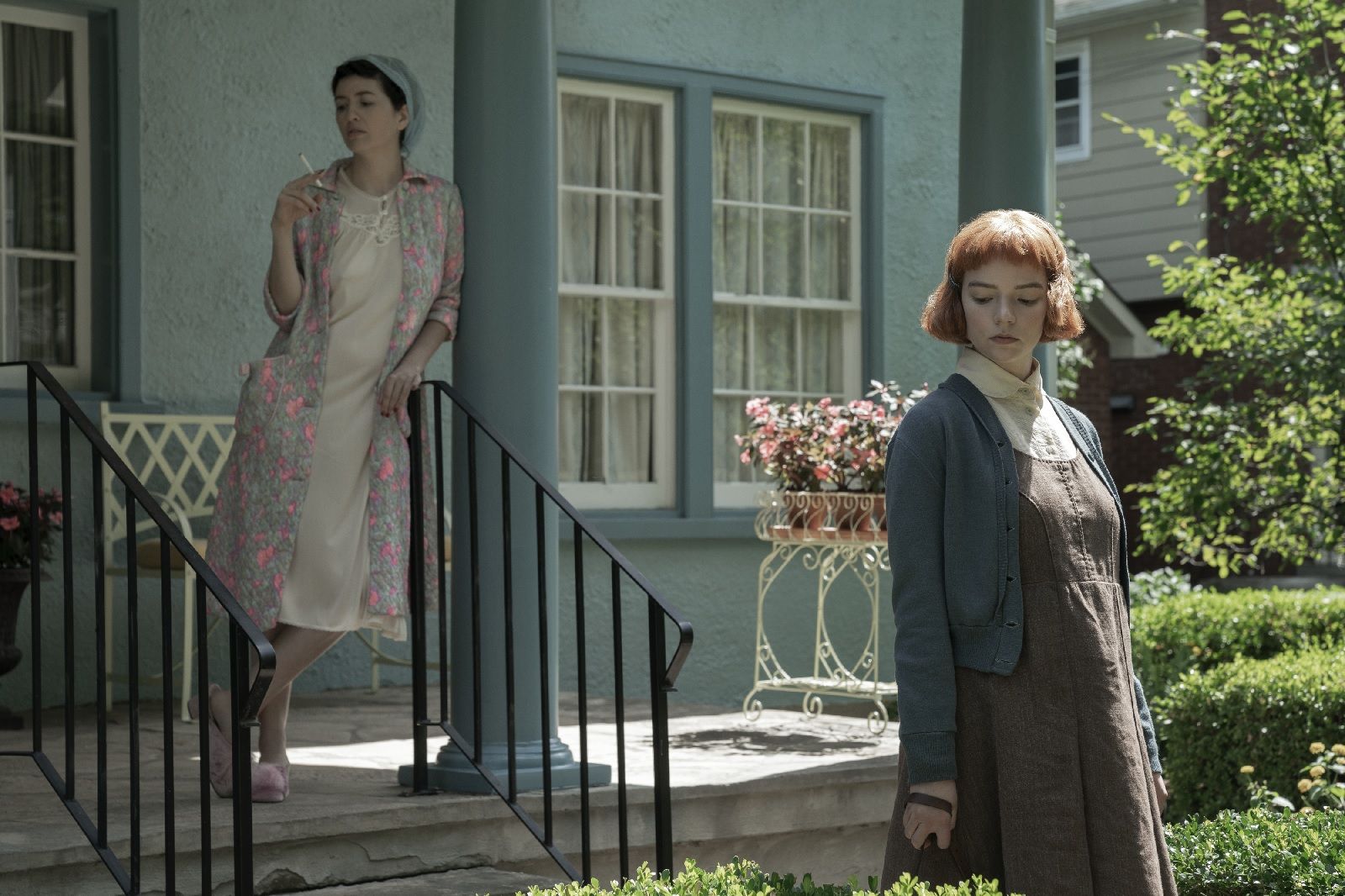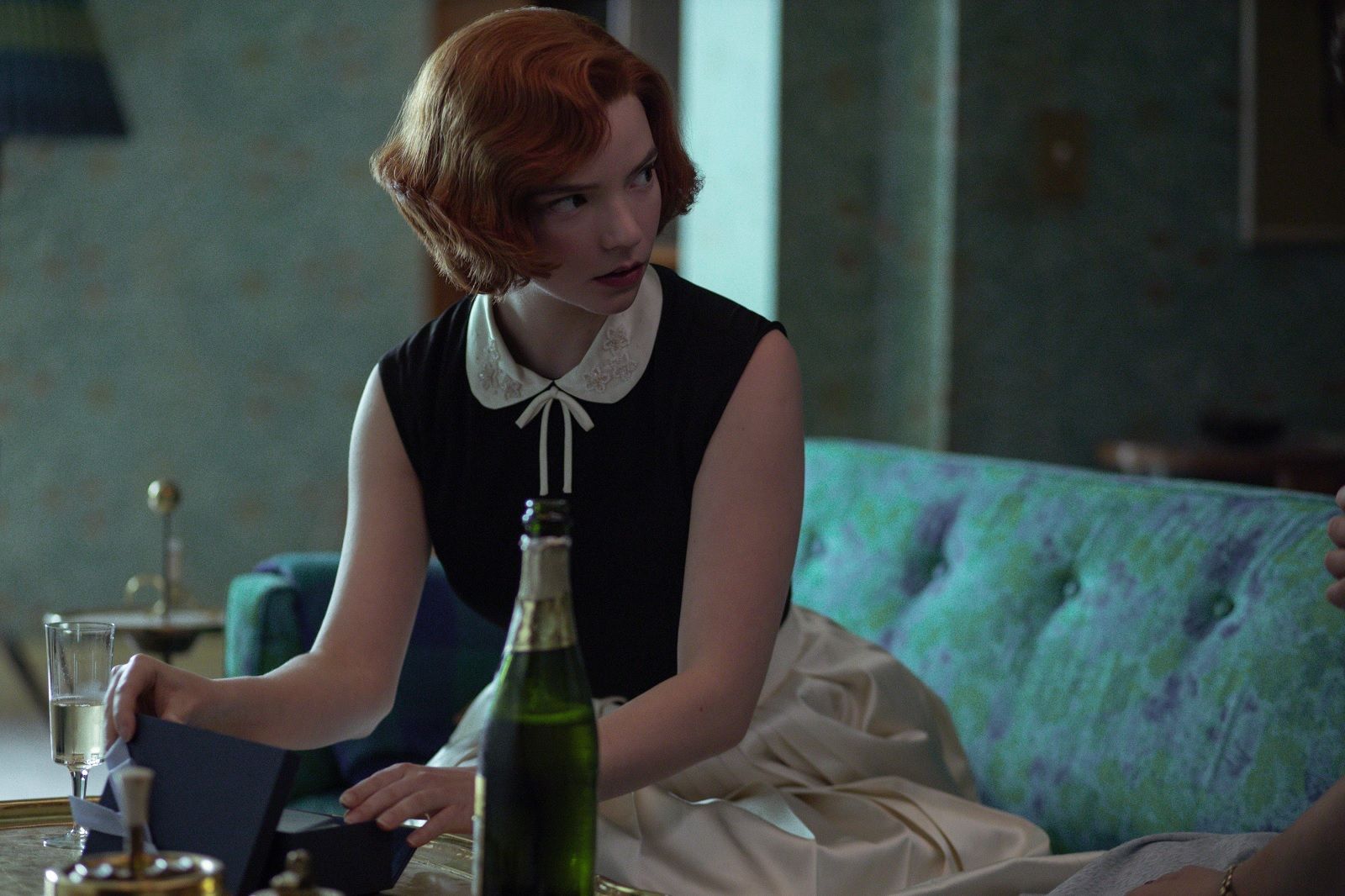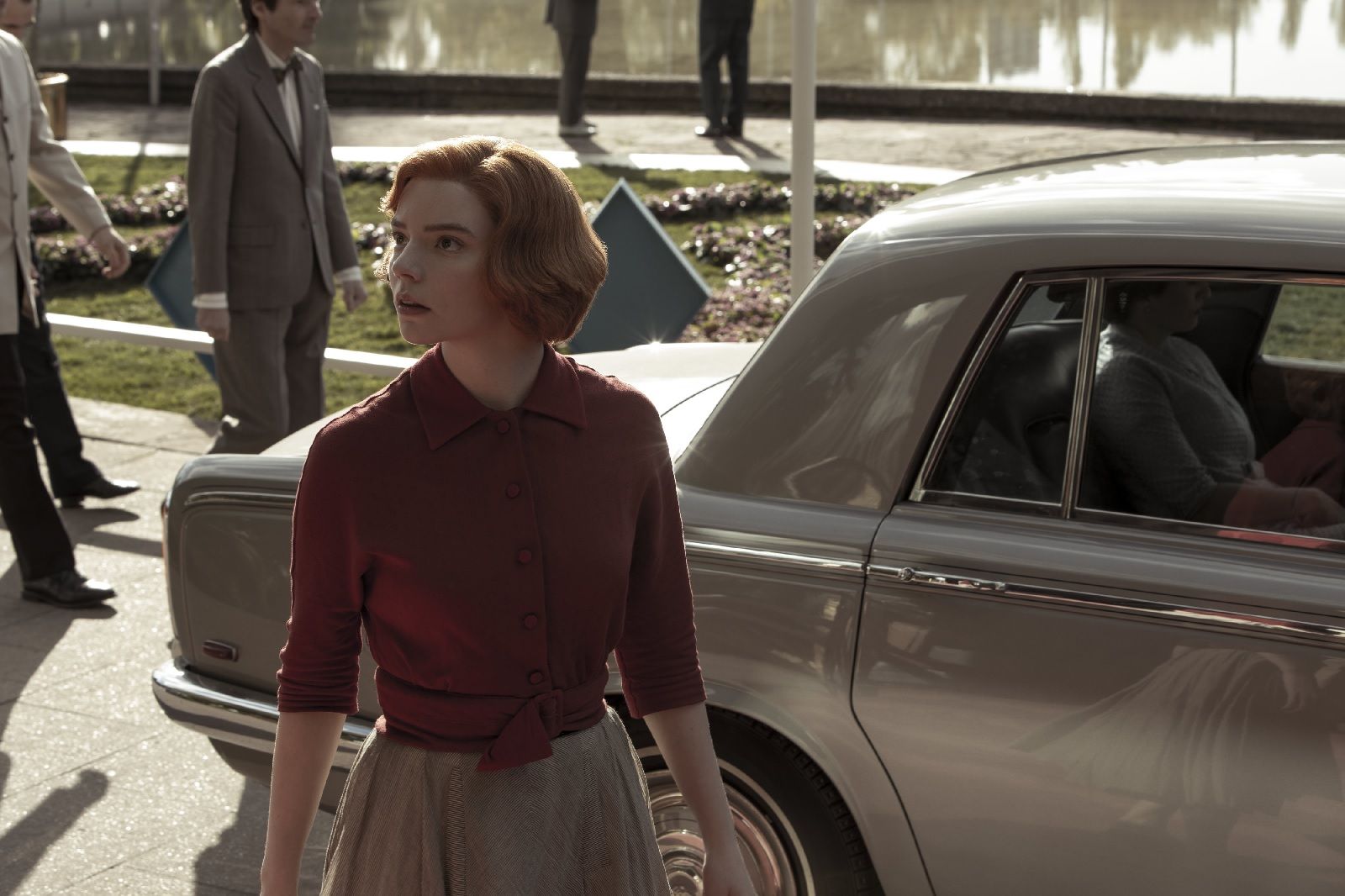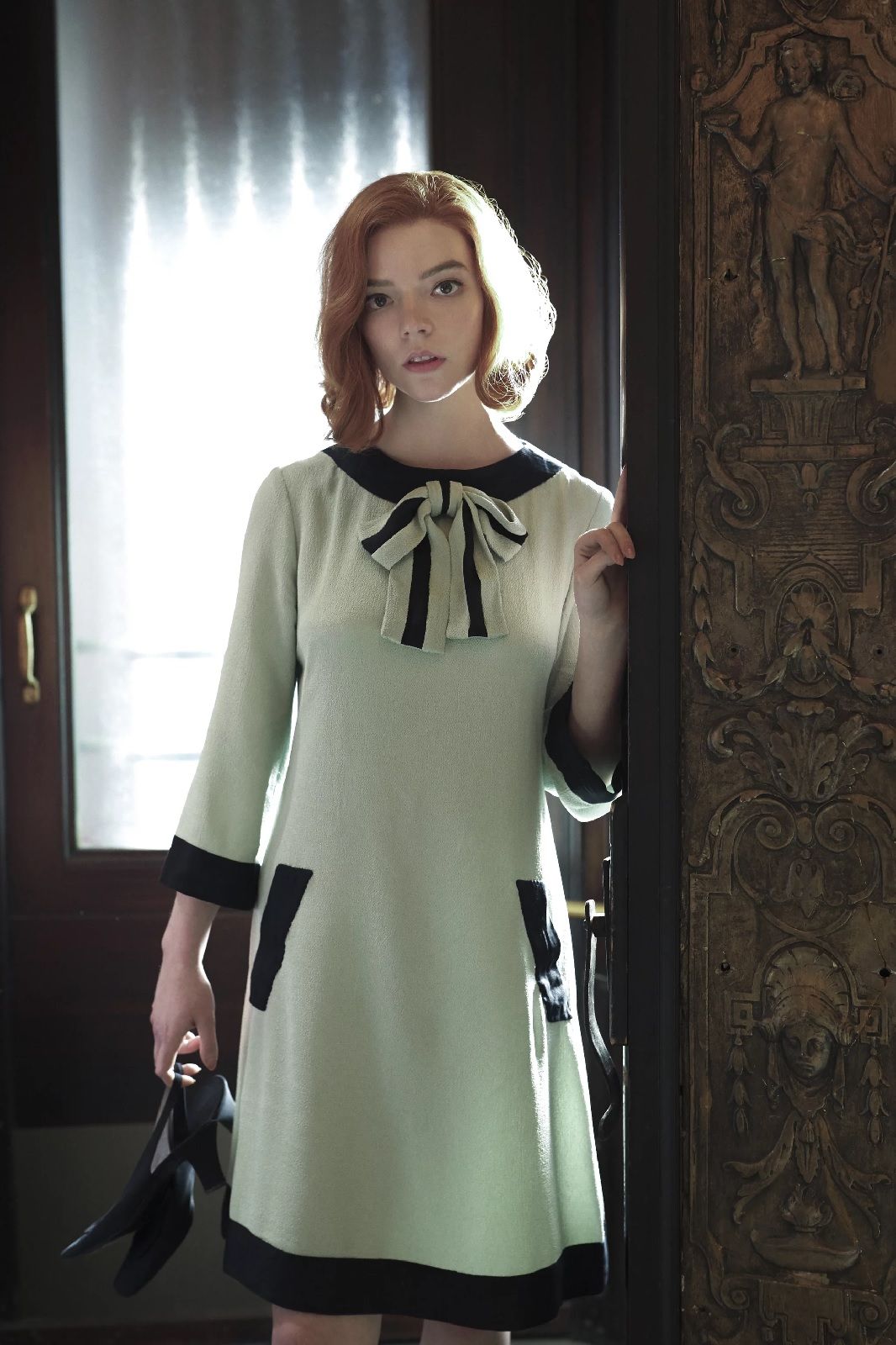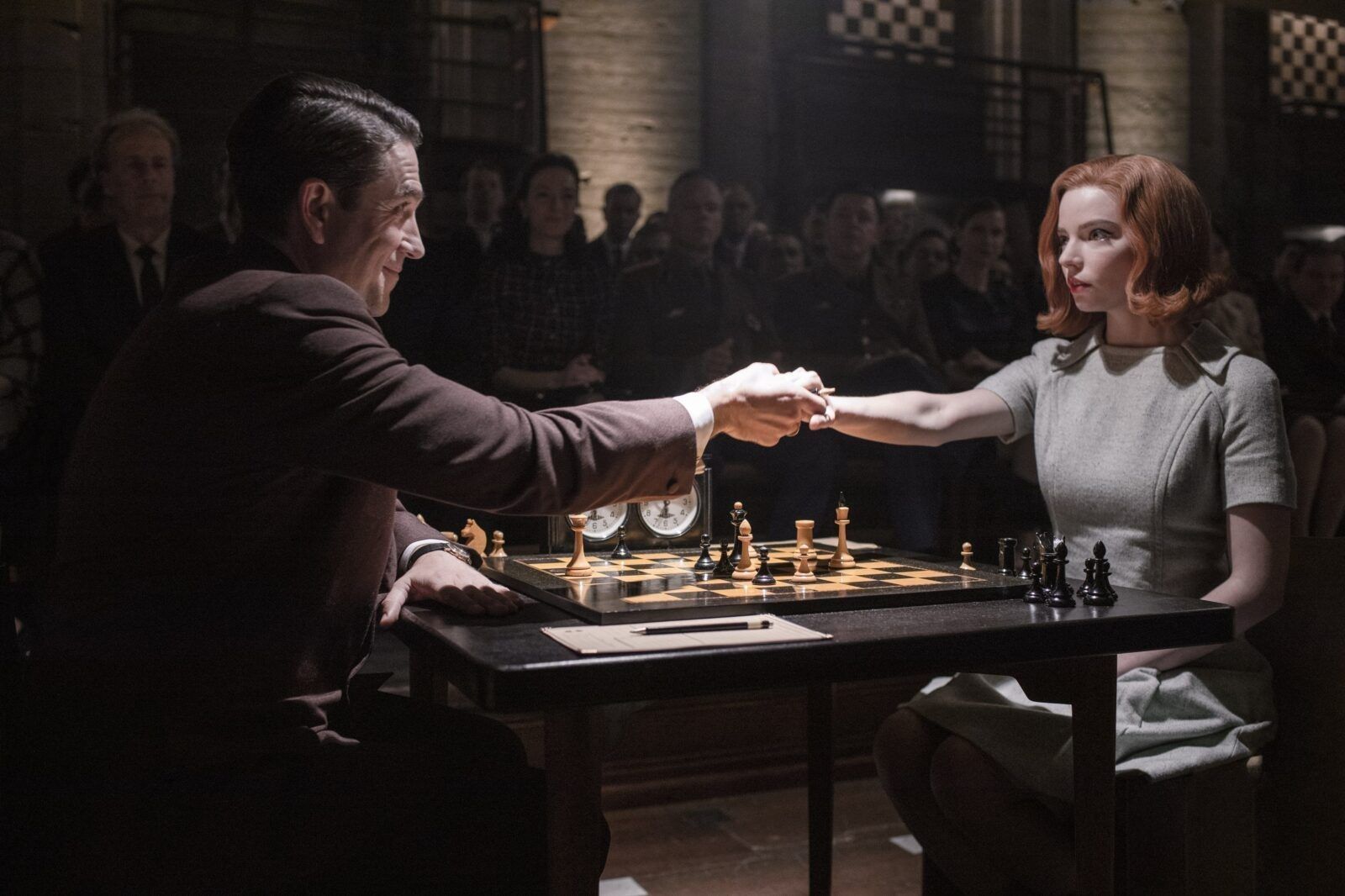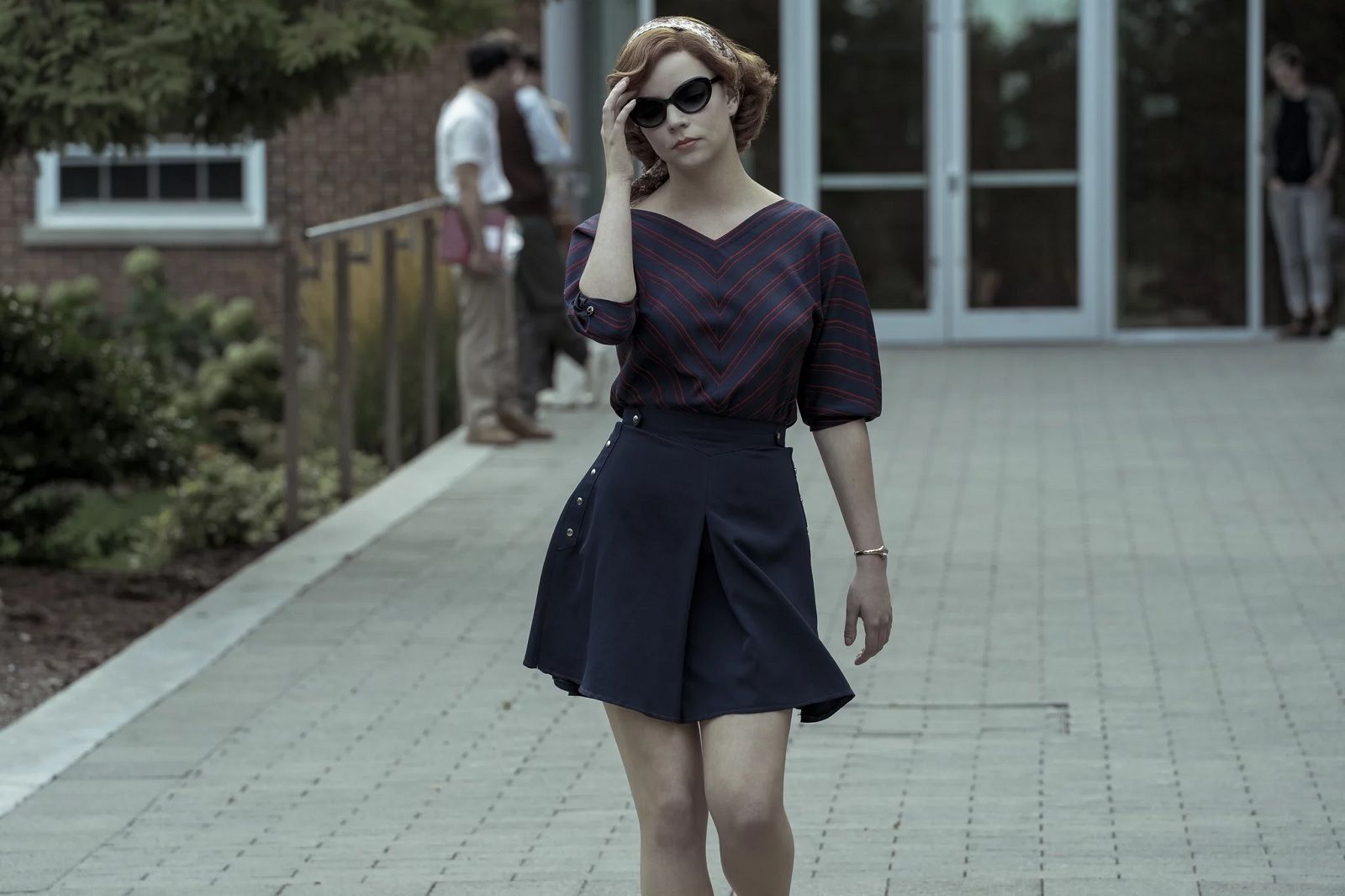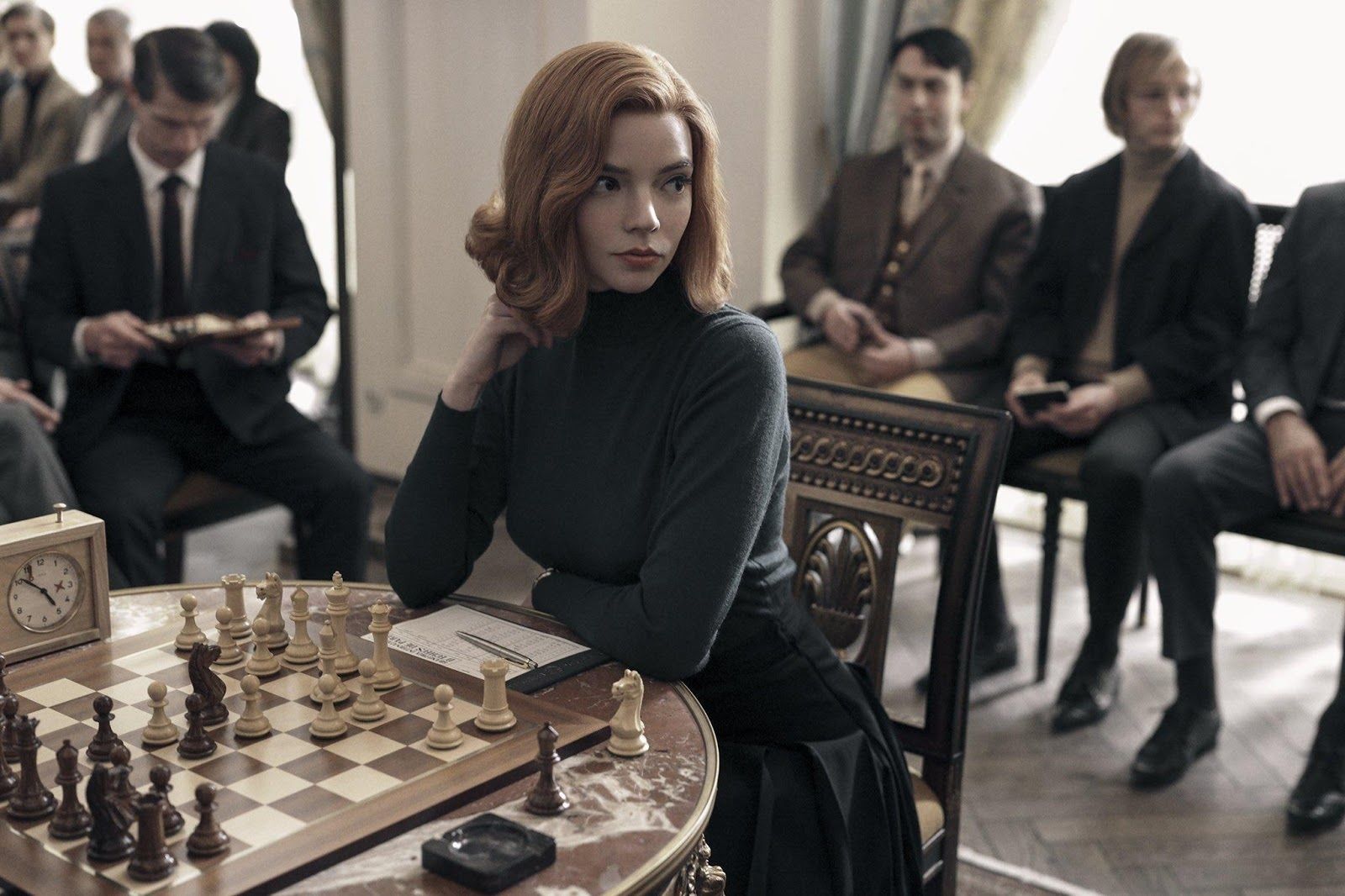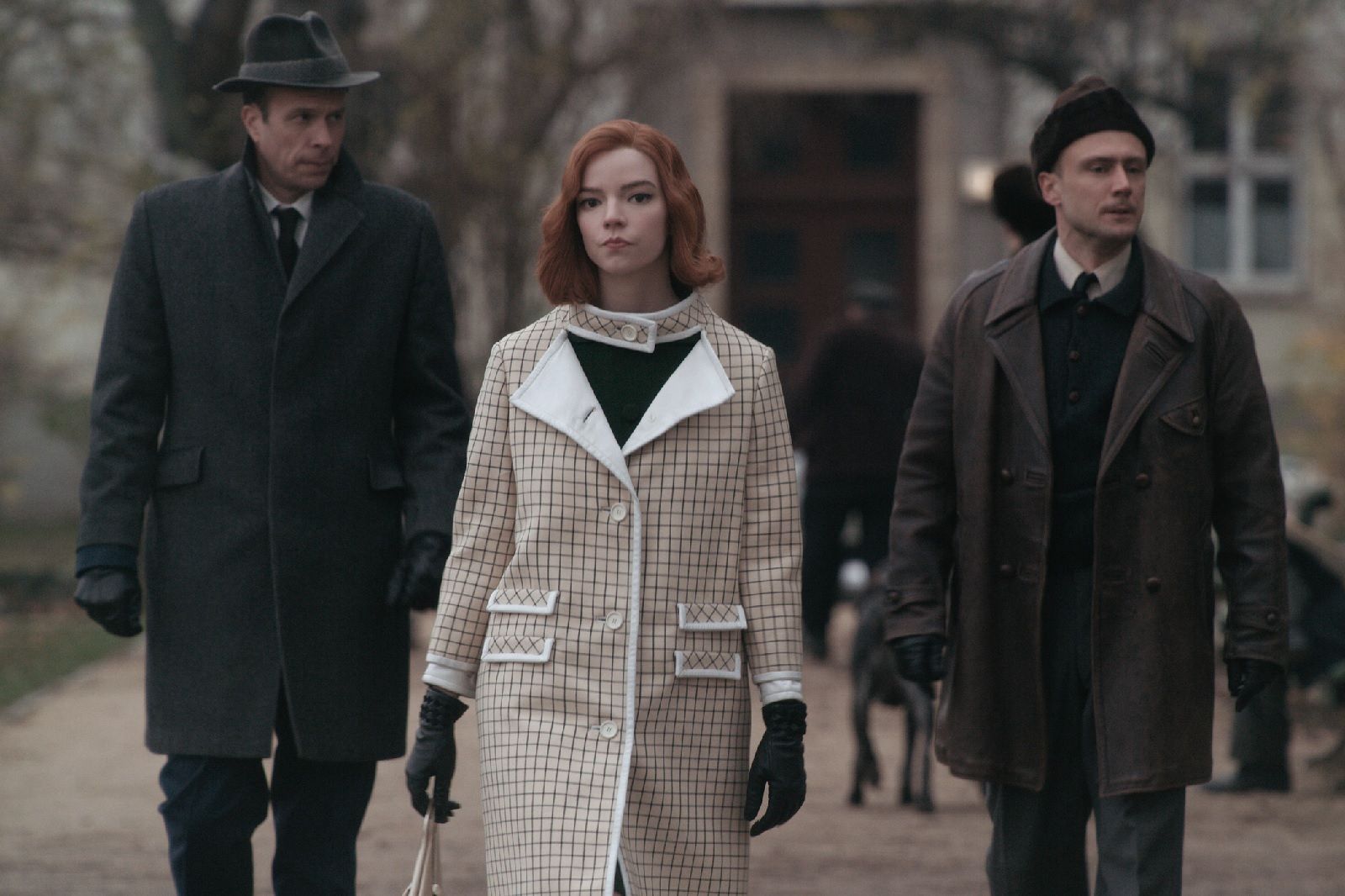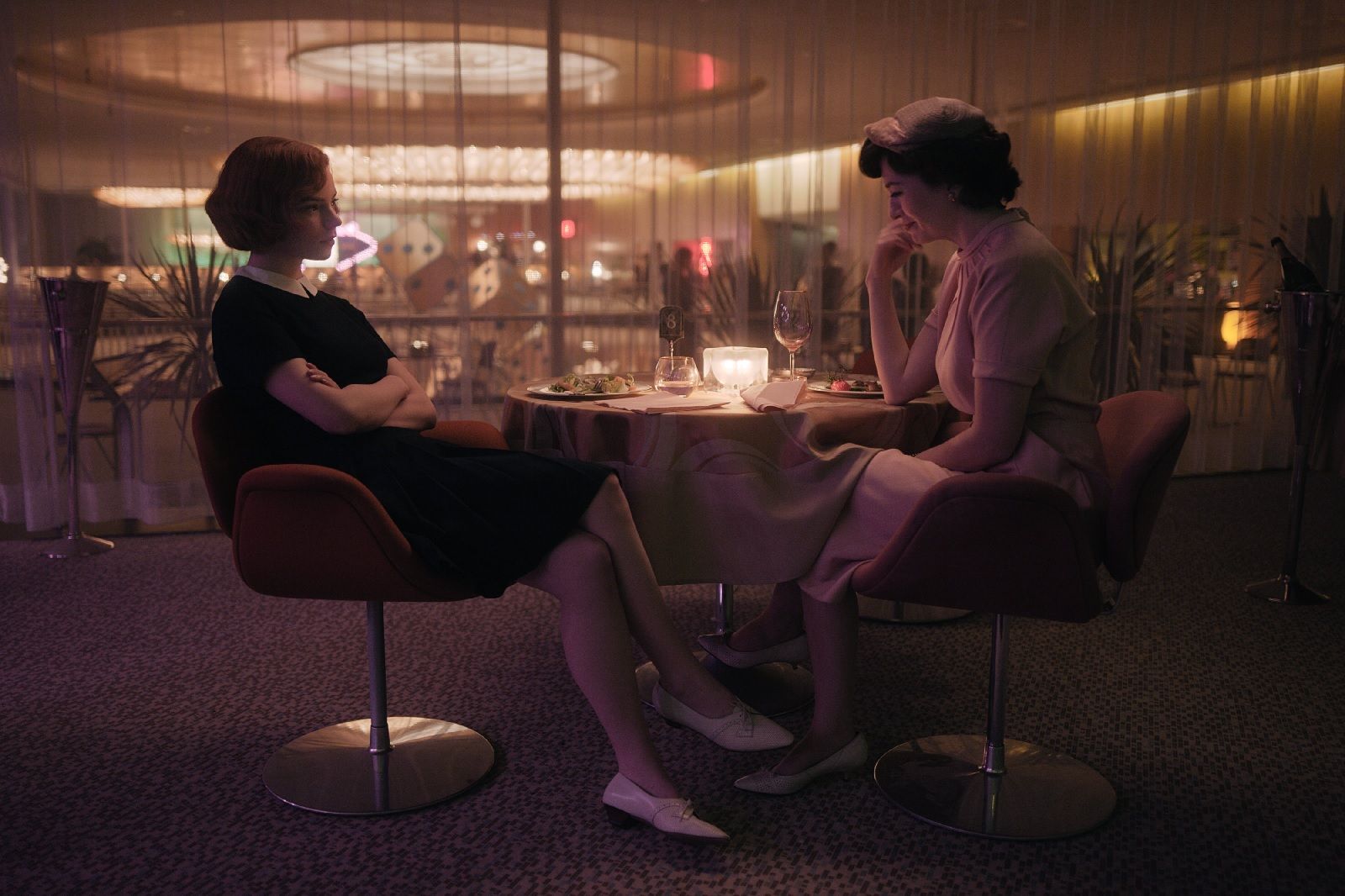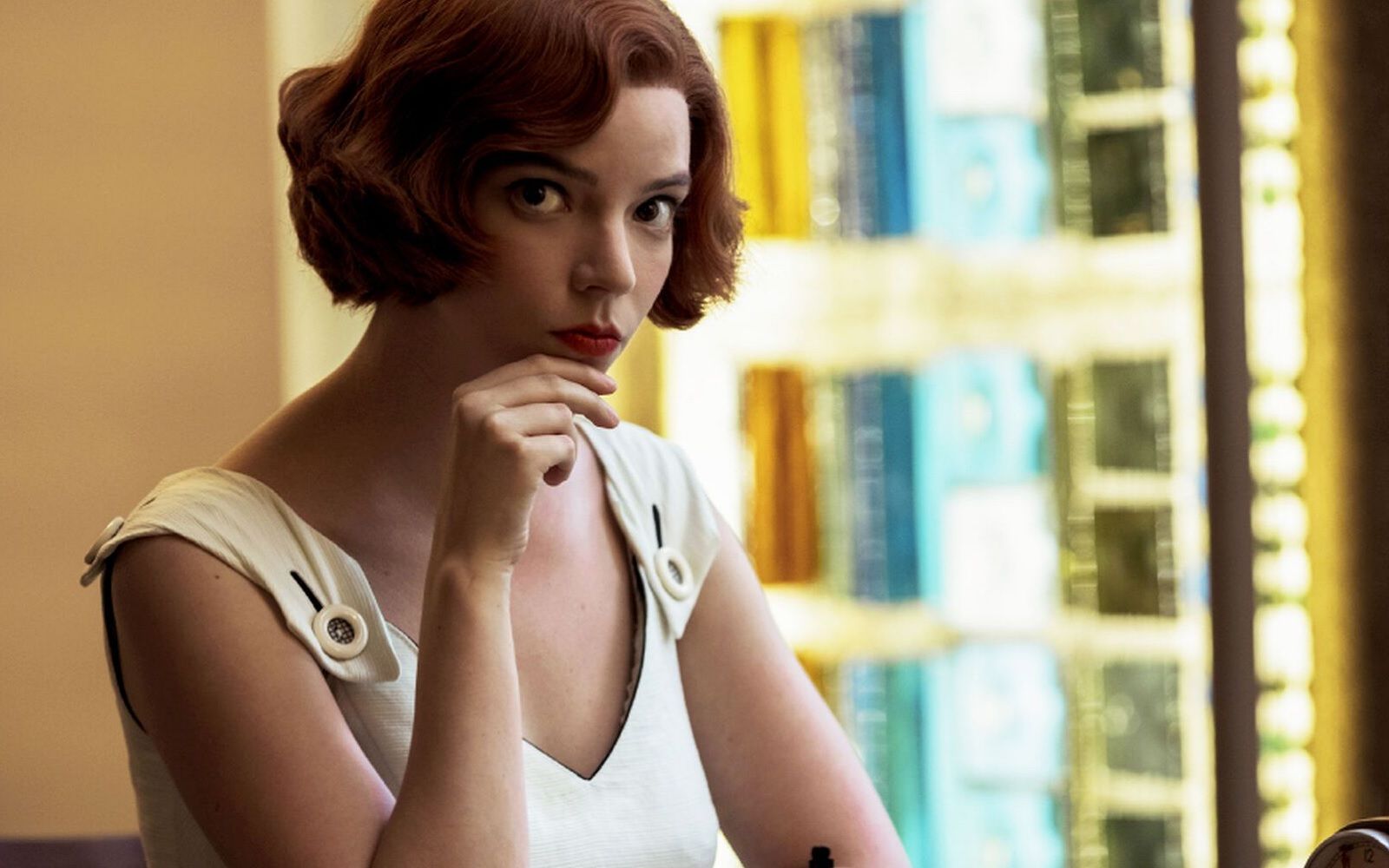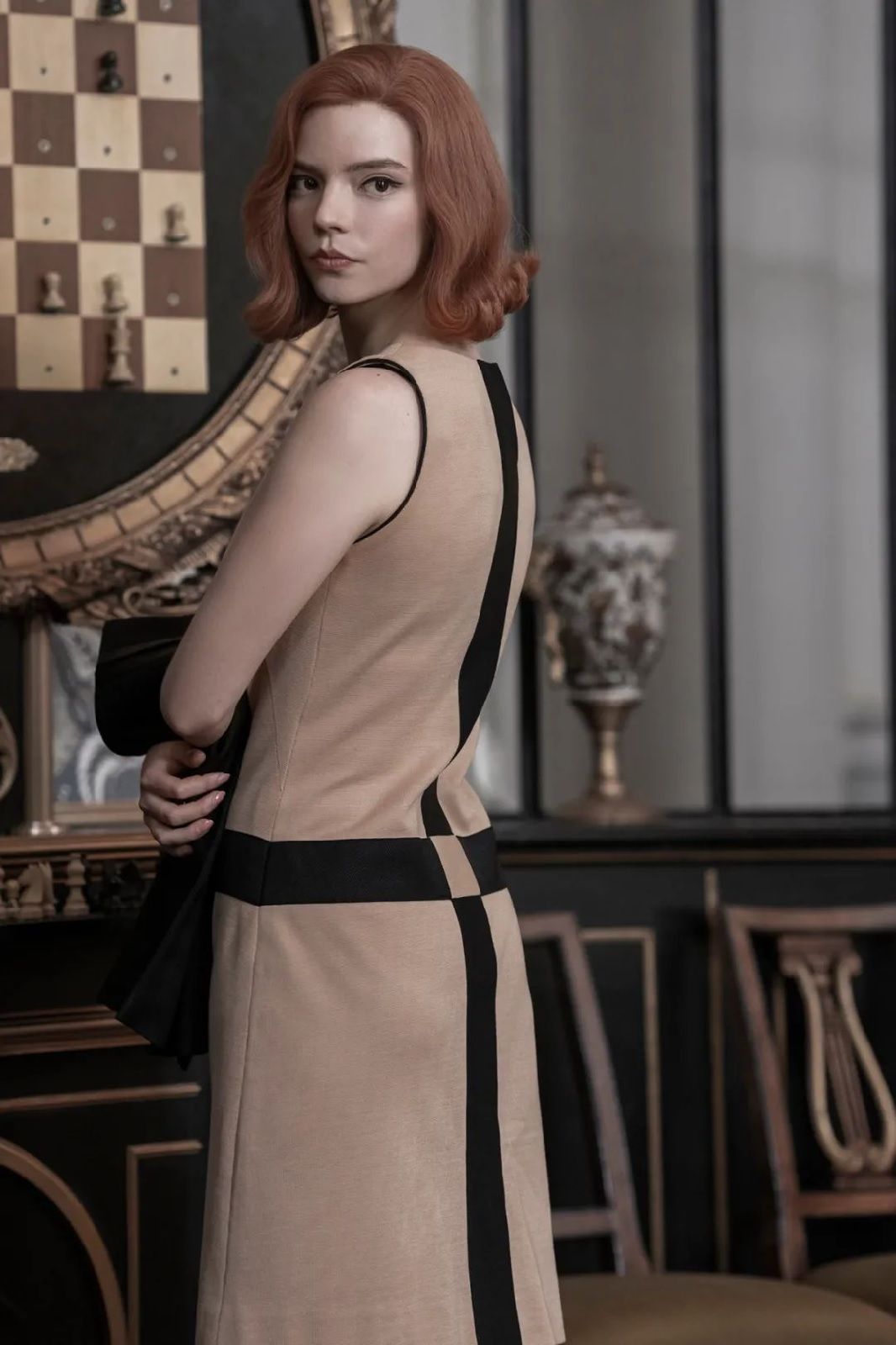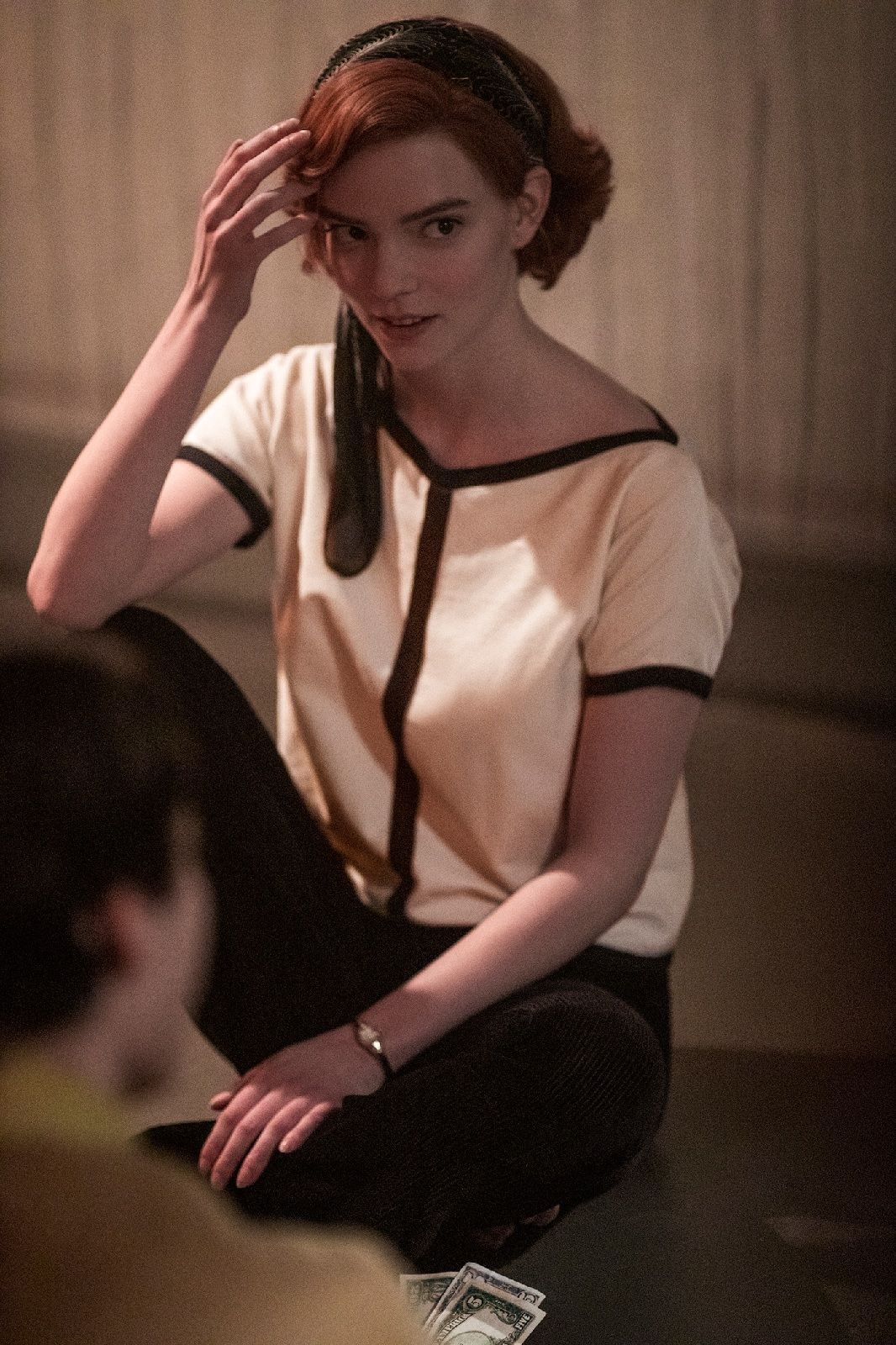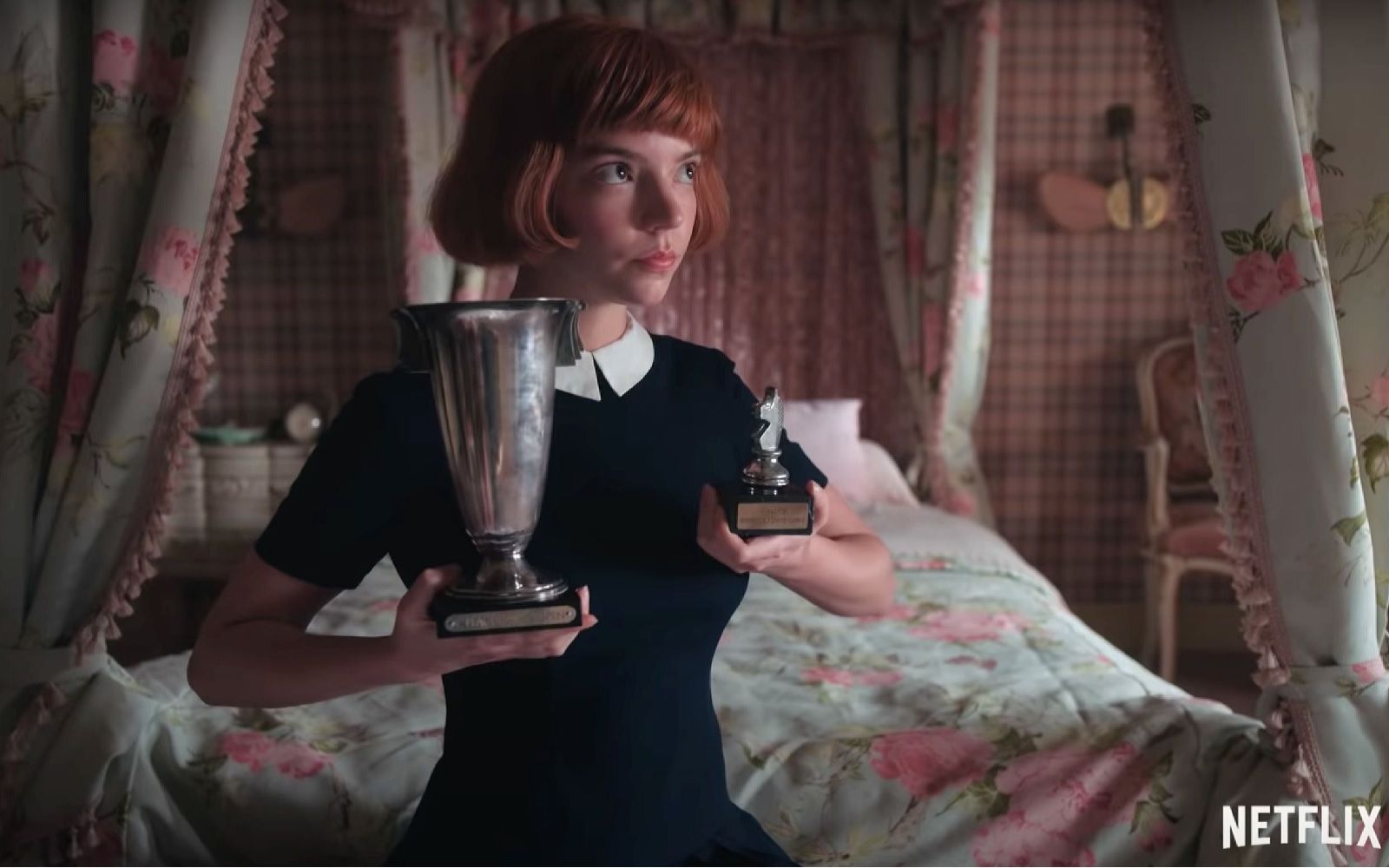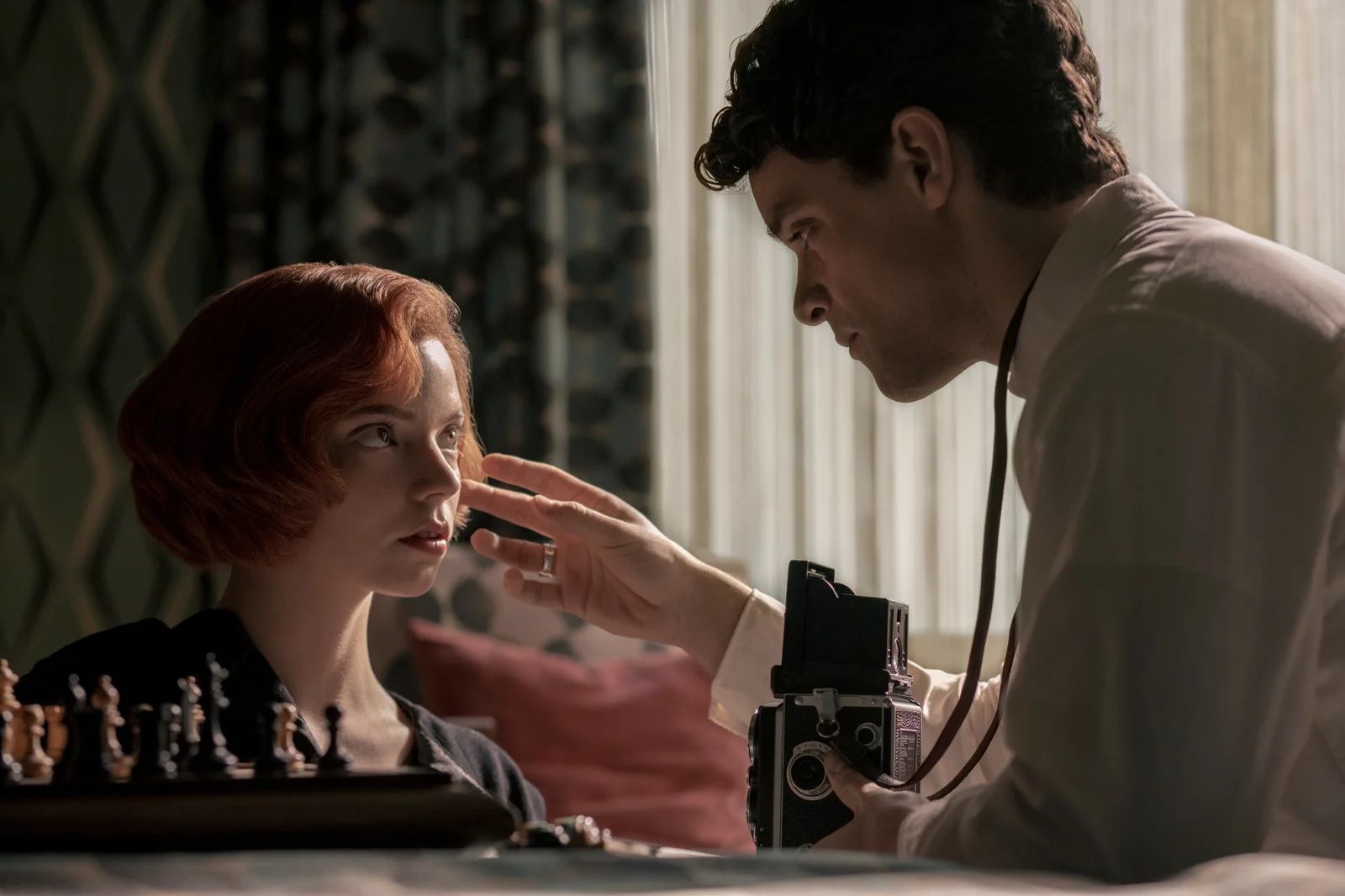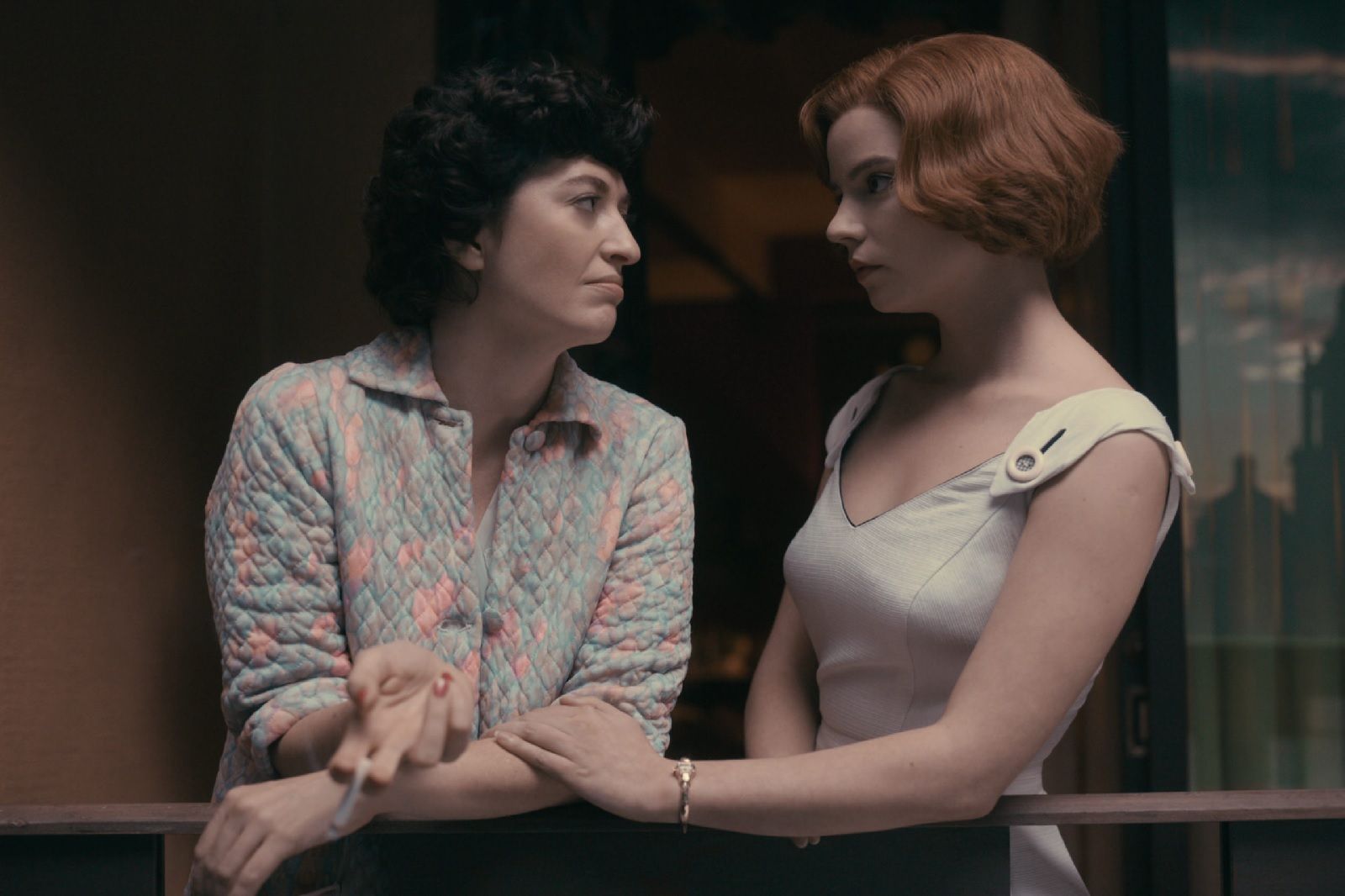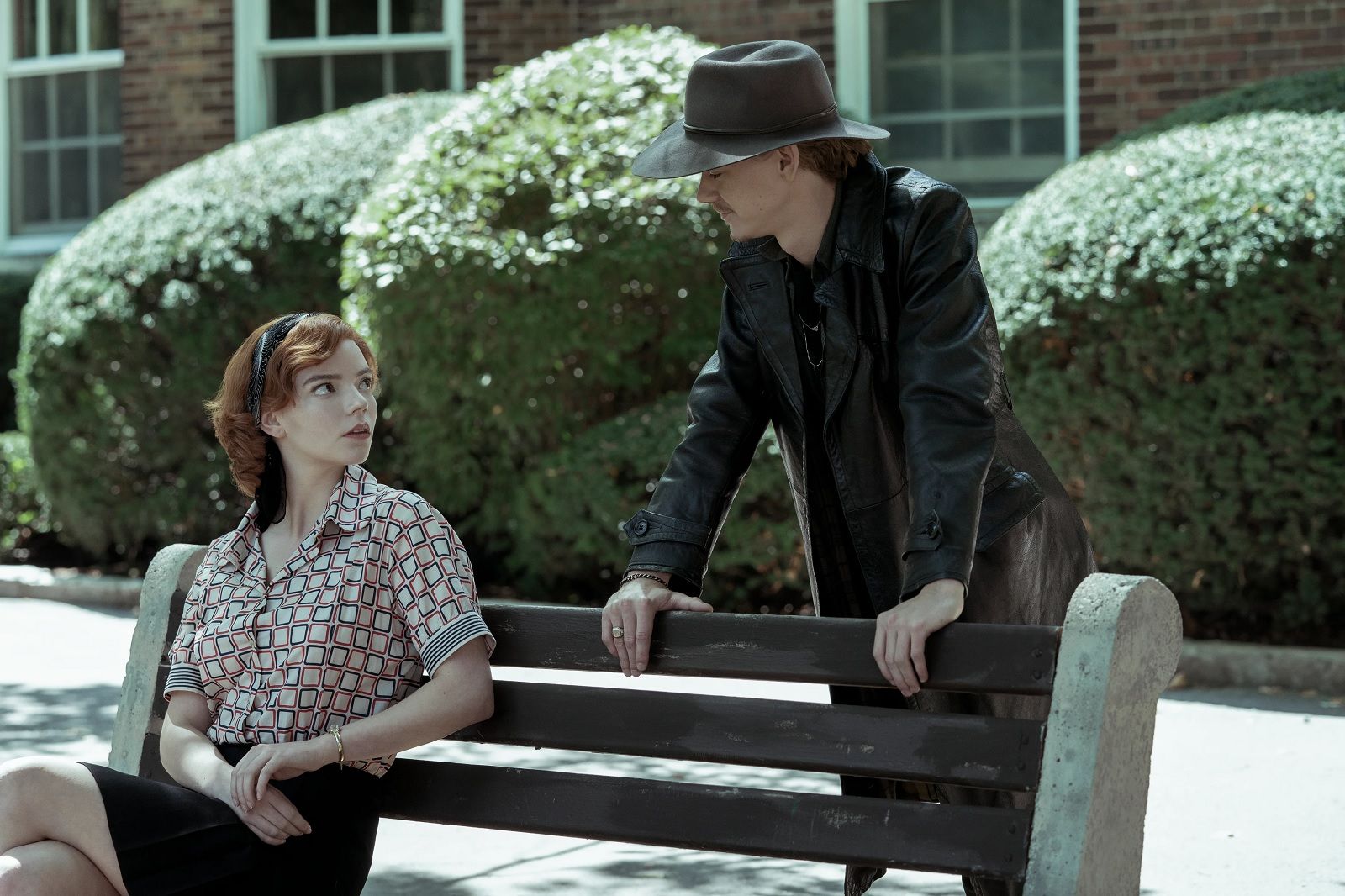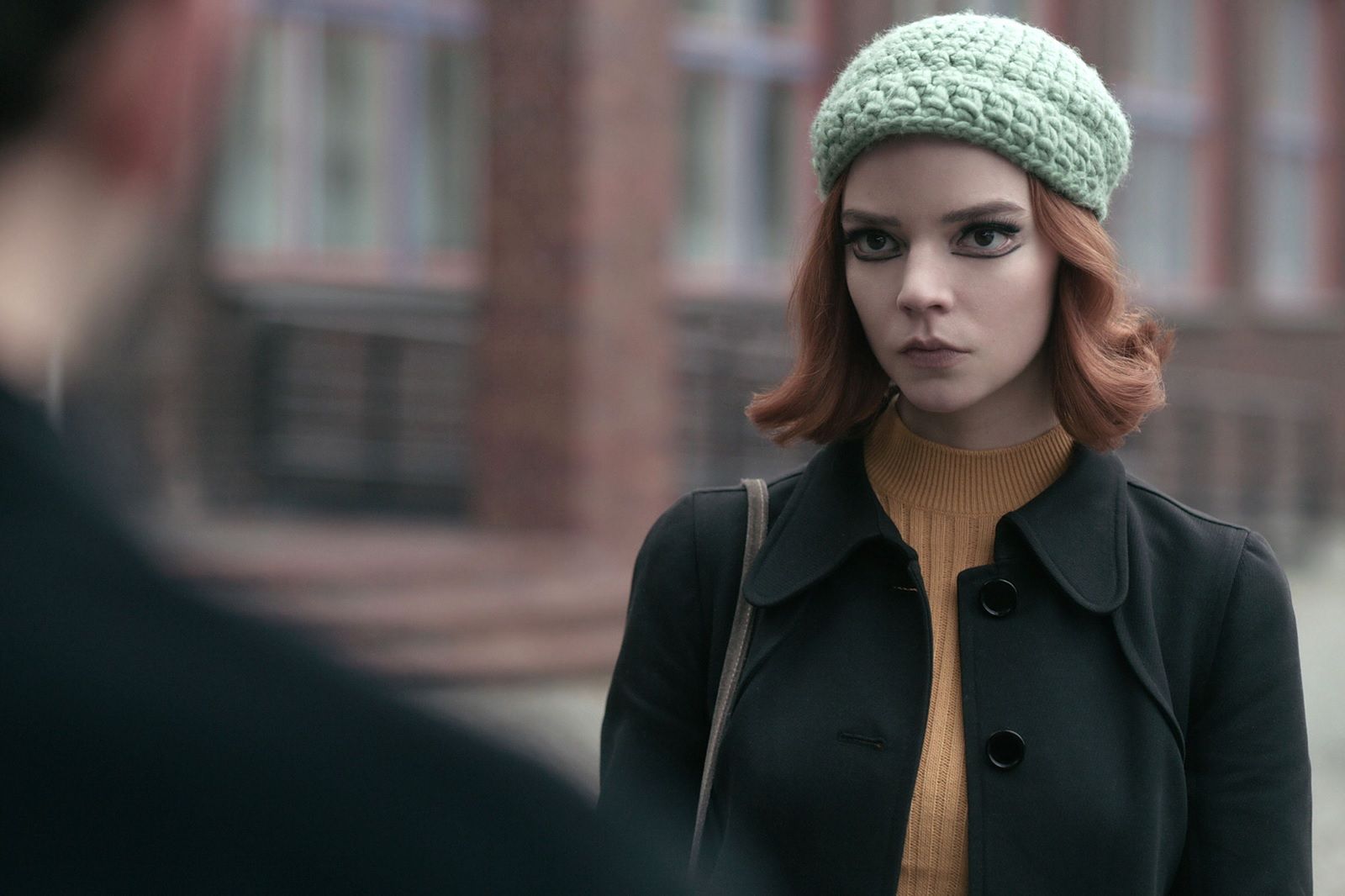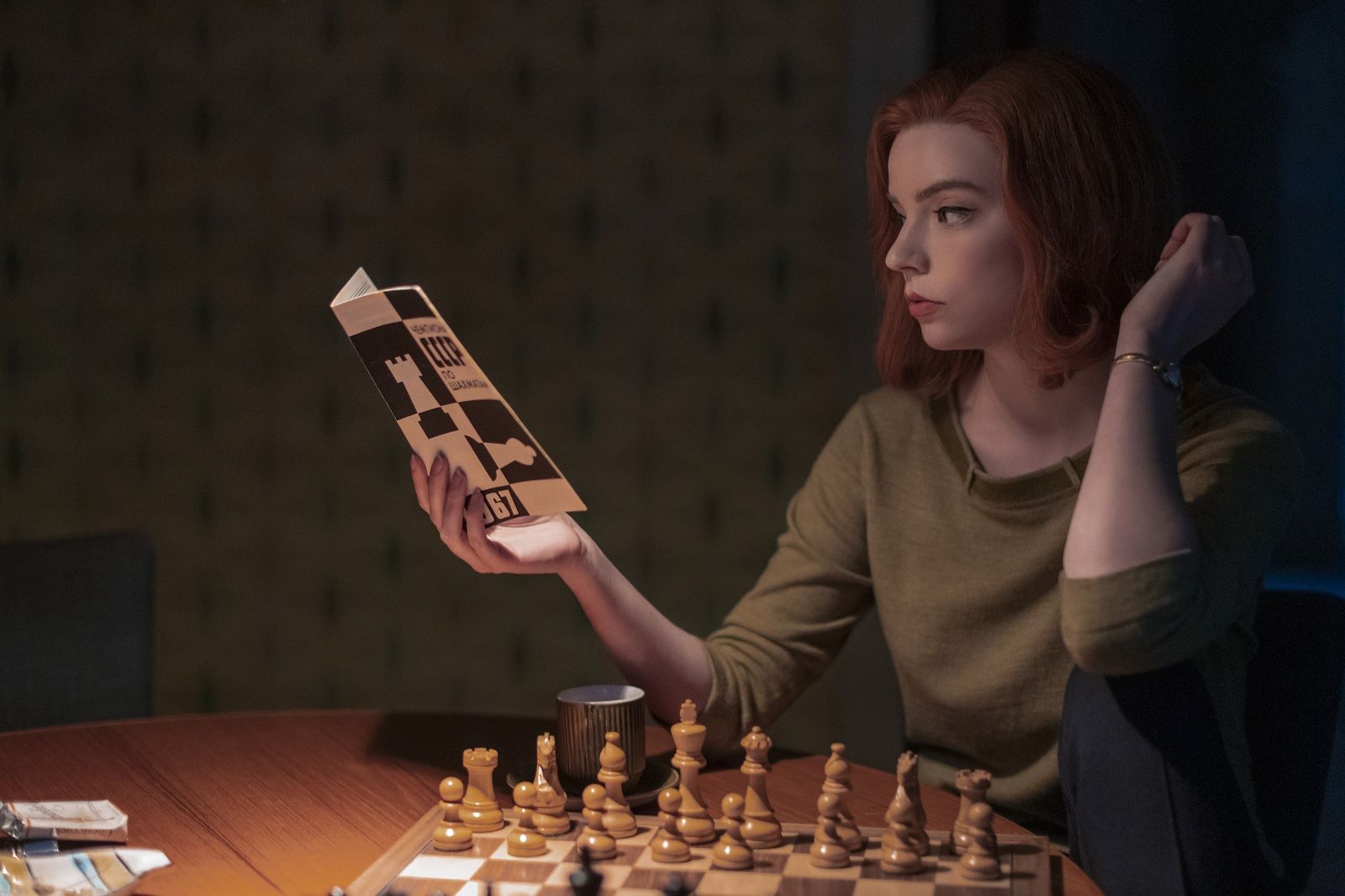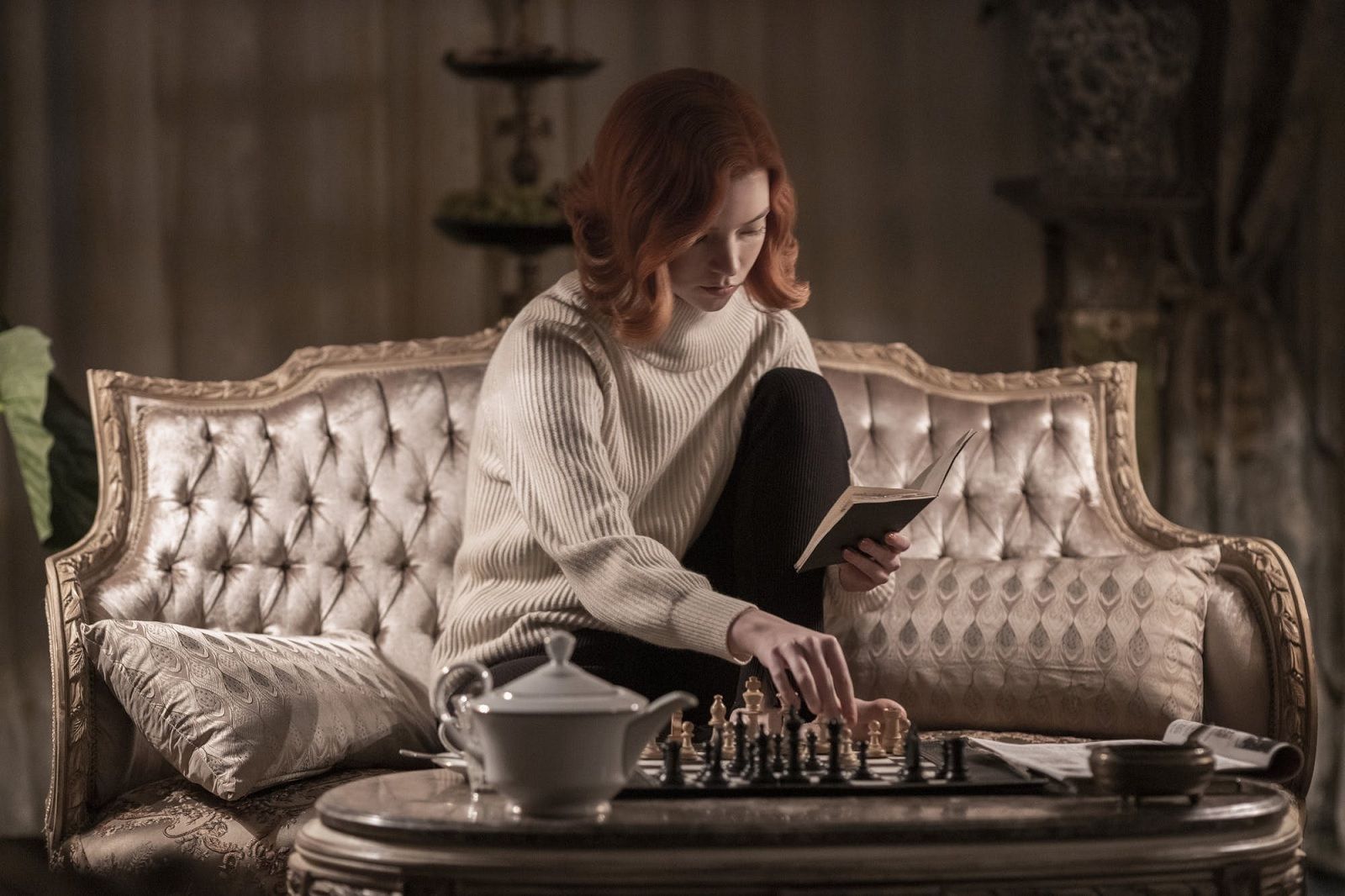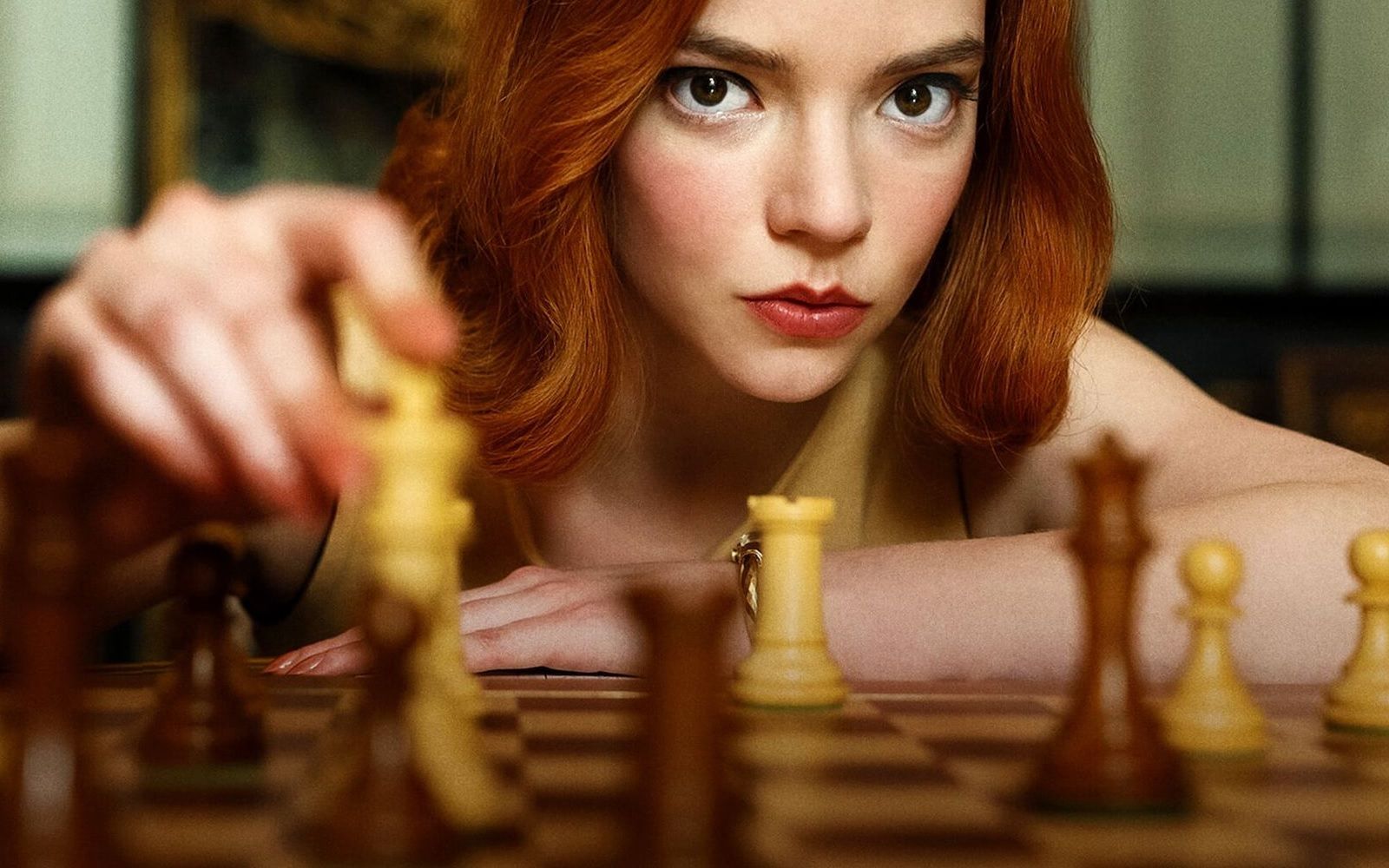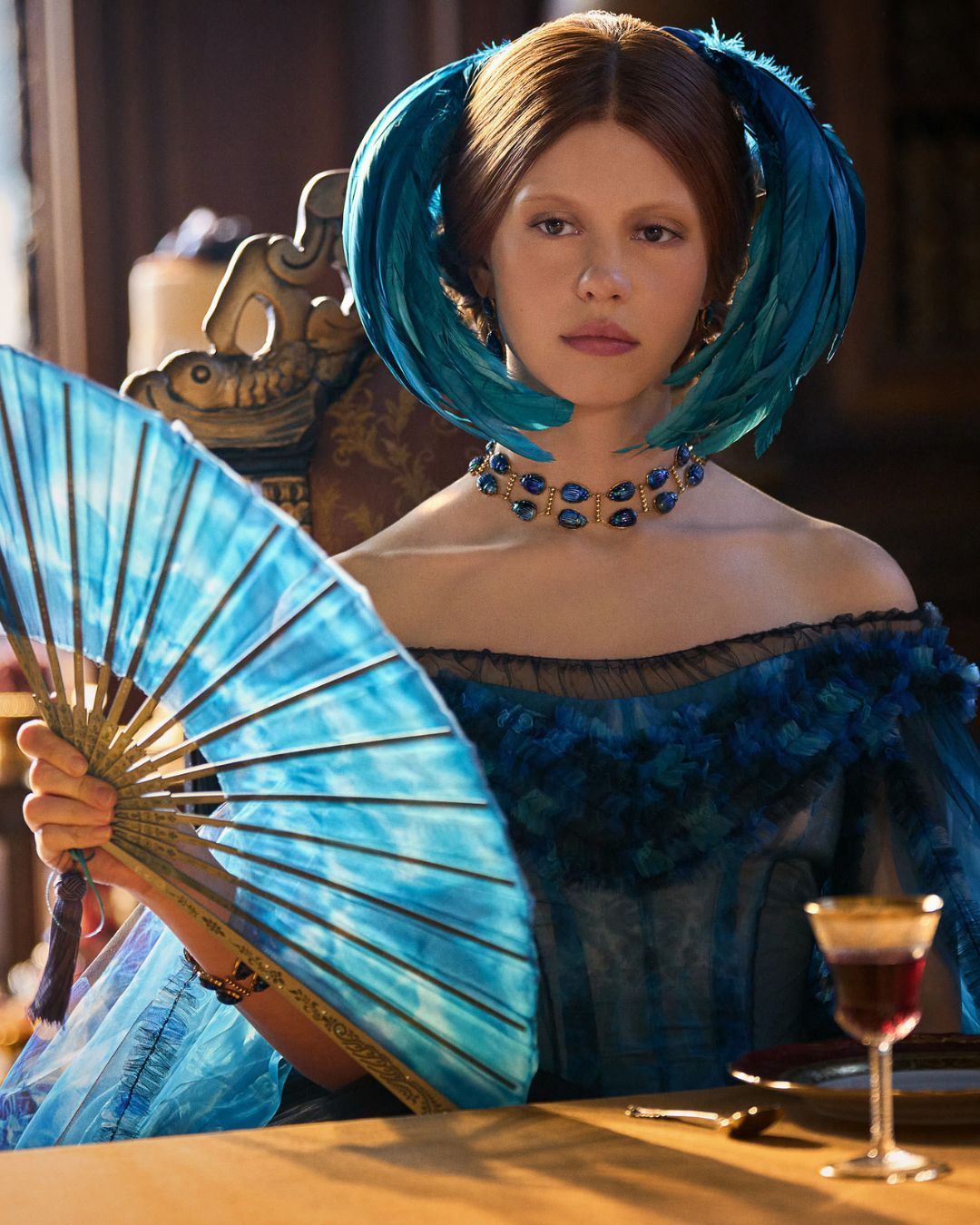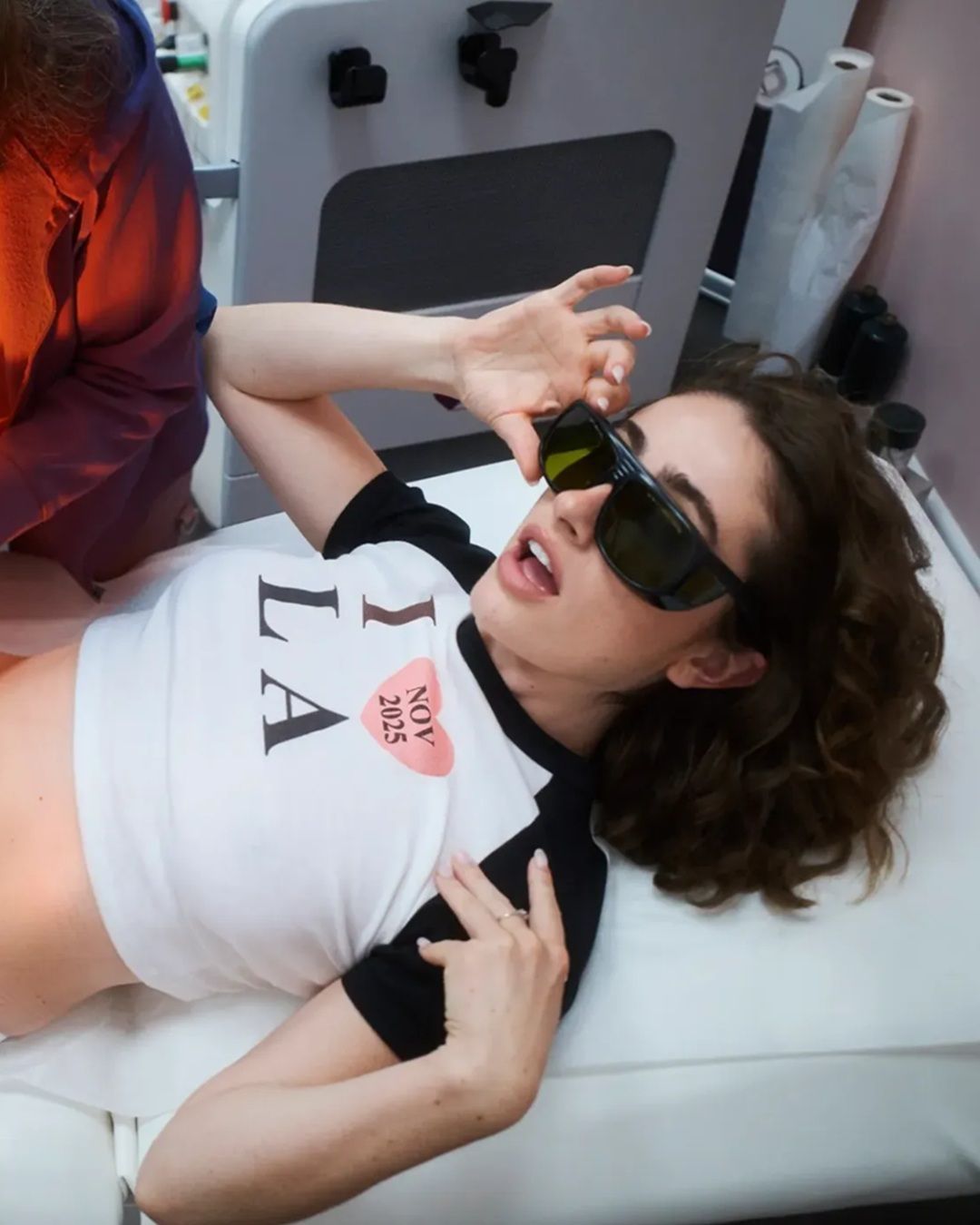
The role of fashion inside "The Queen's Gambit" How the new Netflix series has made chess surprisingly cool
Following the controversial hype created by Emily in Paris, Netflix once again impressed the public with The Queen's Gambit, a series inspired by the eponymous novel by Walter Tevis, released in 1983 and published in Italy by minimum fax. In just a few weeks, the project, which was originally intended to be a film directed by Heath Ledger, has entered the list of the most popular shows on the streaming platform, reached 100% approval on Rotten Tomatoes and is already considered by critics the best miniseries of 2020. This is thanks to a series of elements contributing to its success: the story, in which chess becomes the way of women empowerment; the excellent interpretation of Anya Taylor-Joy who, with her alien face, embodies an imperfect, emancipated and non-stereotypical heroine; a 50s and 60s aesthetic made of mods dresses, graphic make-up and houses furnished in grandmillenial style.
The plot
Kentucky, in the 1950s. Elizabeth "Beth" Harmon was eight years old when, after the death of her mother in a car accident, she went to an orphanage. Here, she makes two life-changing encounters: the first one with benzodiazepines, distributed by the structure as "vitamins" and for which she develops an addiction; the second, and more important, with chess, thanks to Mr. Shaibel, the janitor, who, immediately realizing her enormous talent, teaches her the rules of the game. Beth with her brilliant strategies and cold blood keeps on practicing and, beating every rival, made her talent blossom until she reaches the top of the world rankings. Over the 7 episodes, the chess player goes from a shy teenager to a restless and glamorous adult who, with her red hair, perfect eye-liner and enfant prodige skills, takes her way into a world dominated by men (that of horses and pedestrians, but also that of the Cold War and the US-Soviet Union discount). Among competitions and success, drug and alcohol addiction, nevrosis and loneliness, Beth finds her place on the chessboard, imperfect, beautiful, smart, fragile and at the same time very strong, but always true to herself queen.
Fashion and beauty
One of the highlights of The Queen's Gambit is the 50s and 60s aesthetic involving every aspect of the series, from locations to costumes, from beauty to soundtrack. Thanks to the careful screenplay by Allan Scott and Scott Frank, Beth is a brilliantly complex character, poised between intelligence and eccentricity, so emancipated and far from stereotypes that she doesn't sacrifice her love for fashion to not be judged frivolous by her rivals or society. Her wardrobe, artfully created by Gabriele Binder, is inspired by outsiders of the time such as Jean Seberg or Edie Sedgwick, but there are also references to the Biba style and to Jackie Kennedy and Audrey Hepburn.
Each look is designed to reflect a mood. For example, in the first episode, the character played by Taylor-Joy wears a pale green dress that her mother had made for her, embroidering her name on the front. That color represents Beth's sense of "home" and, for this reason, she also shows it off in her last tournament in Moscow, as it symbolizes both the presence of the parent at her side and her transformation from a fragile little girl to a strong and independent woman. The young genius goes from a daily uniform consisting of a cerulean sweater and lace-up shoes worn with short socks, which reminds a bit of some of Margaret Howell's creations, to a series of bon ton coats, trapeze dresses, pleated skirts and turtleneck, maxi cardigans, palace pants and geometric blouses. There are many references to chess, constantly evoked by the use of checkered prints and perfectly embodied by the final all-white outfit that makes Beth look like a real white queen, mistress of the chessboard and her life; but there are also tributes to the culture of the time through "beat generation" t-shirts and pieces recalling Pierre Cardin and the silhouettes of André Courrèges. The sixties counterculture enters in a small dose into Miss Harmon's outfits, but is instead well portrayed by her friend and adversary, Benny Watts (Thomas Brodie-Sangster), not a chess geek, but like Beth, a real outsider who, wearing a cowboy hat, silver jewelry and a knife on his belt, looks like a mix between a character from the western movies and Mr. Crocodile Dundee.
Beth's state of mind is constantly reflected not only in her outfits, but also in her beauty choices. Like when, in the middle of a nervous breakdown, while dancing on Shocking Blue's I'm Your Venus, she decides to copy the graphic look of singer Mariska Veres, a floating eye-liner that has also been playing a leading role on the recent catwalks.
Daniel Parker, the head of the make-up department of The Queen's Gambit explained in an interview that the muse for Beth's beauty looks is actress Natalie Wood with her classic 1950s, sober but sophisticated style. The essentials are eye-liner for perfect cat-eye, black or white pencil at the bottom of the eye, rimmel to define the lashes, lipstick in shades of red or brick and always flawless hair.
The red bob is the element that best identifies the character played by Anya Taylor-Joy. During the episodes, thanks to a series of wigs, the natural dark brown hair of the actress is declined in looks very distant from each other.
Depending on the time of the story the color is more amber or tending to blond, as well as the haircut that when she was a child is in an ultra-short haircut with bangs, then passes to a slightly scaled bob, sinuous with the waves and the sideline, until reaching in the last episode the long bob with points upwards. The inspiration? The haircut created in 1961 by Kenneth Battelle, the most fashionable New York hairdresser of the era.
Interior design
Among the many attractions of The Queen's Gambit, there is Beth's house, the house of the couple who adopted her, Mr. and Mrs. Wheatley. In real life, the property is located in Cambridge, Ontario, but in the series is located in Kentucky and perfectly evokes the mood between the late '50s and early '60s. Looking at the images of Beth lying on her canopy bed in her floral room, sitting smoking on one of the velvet armchairs and on the water-green sofa or playing chess on the Louis XVI style chair, you may be tempted by the overwhelming desire to renovate the house in grandmillenial style and cover the walls with pastel, checked or floral wallpaper. If in these weeks of lockdown you will dedicate yourself to the restyling of your apartment, the new Netflix series is the right inspiration. Our advice? Focus on full colors like in Beth's living room and mix'n match prints.



















































